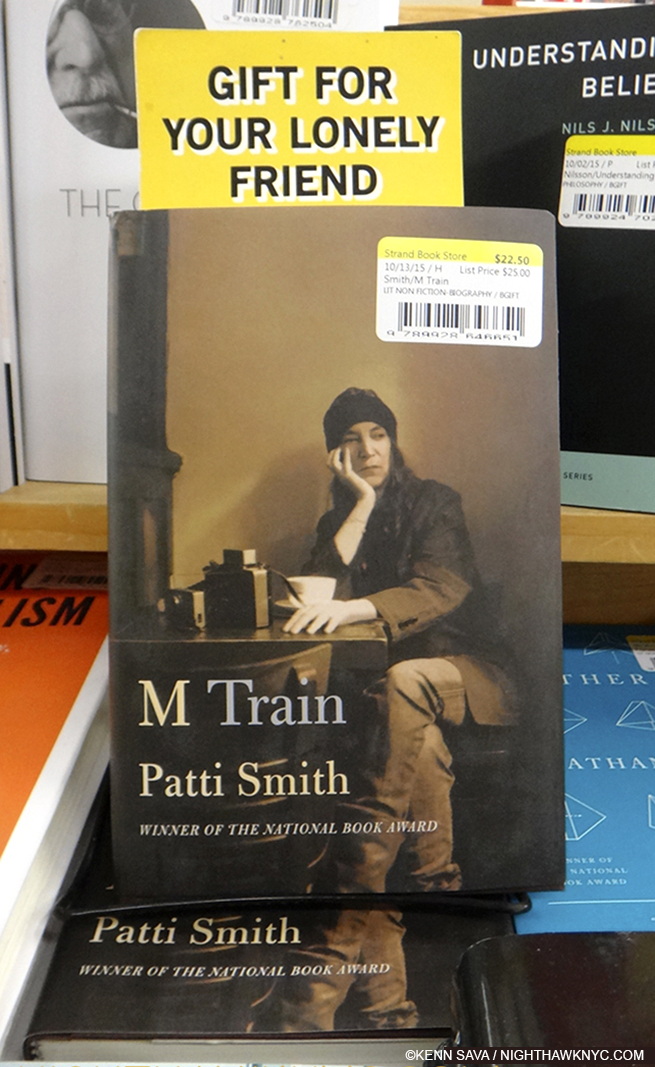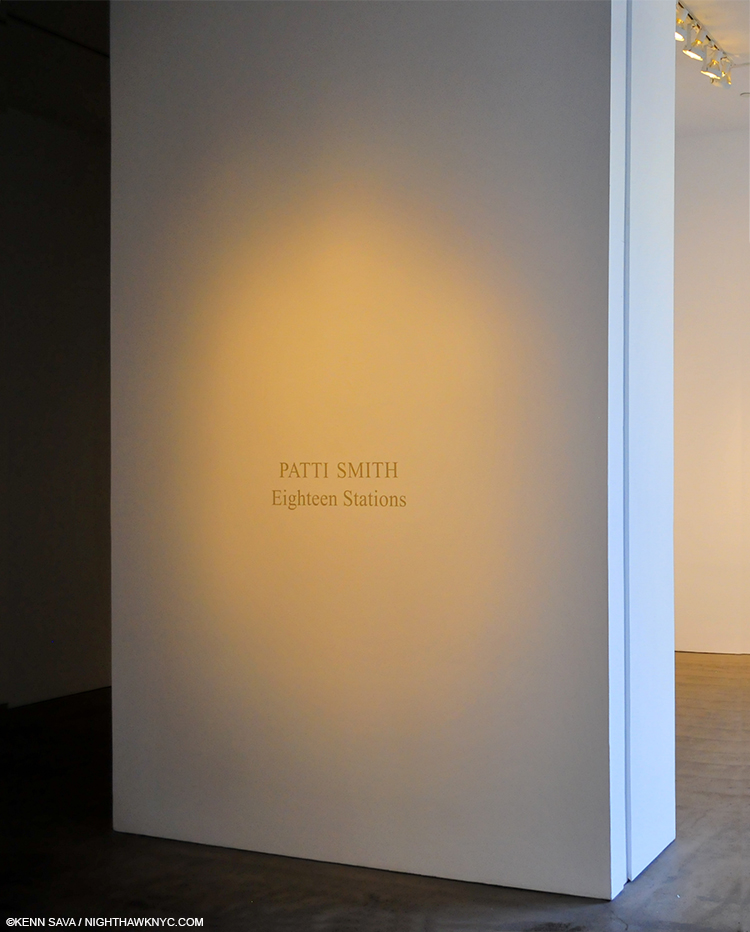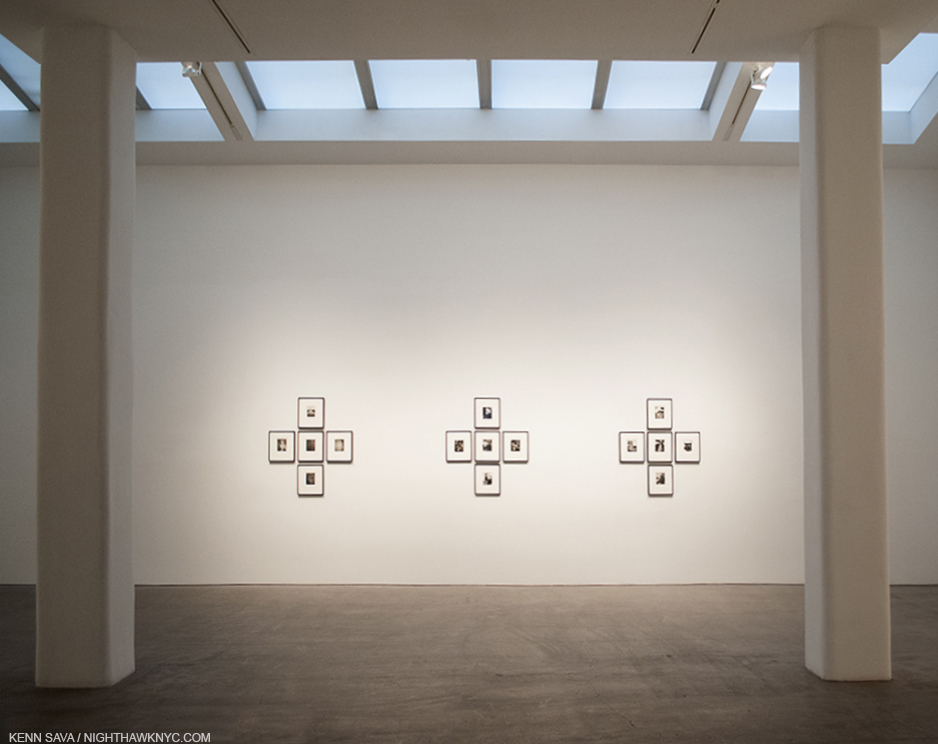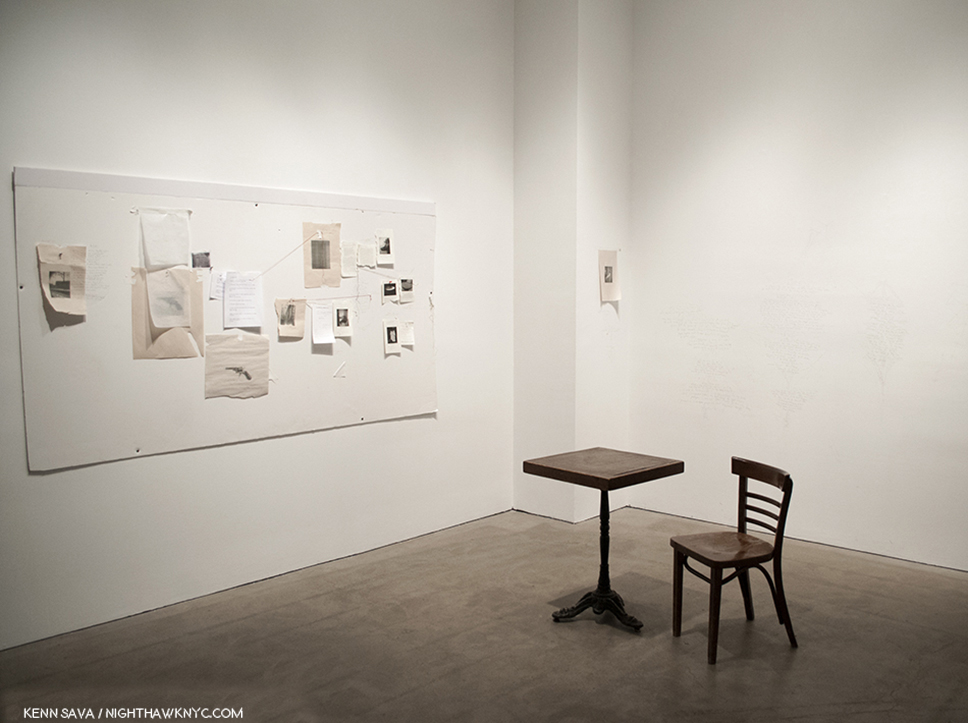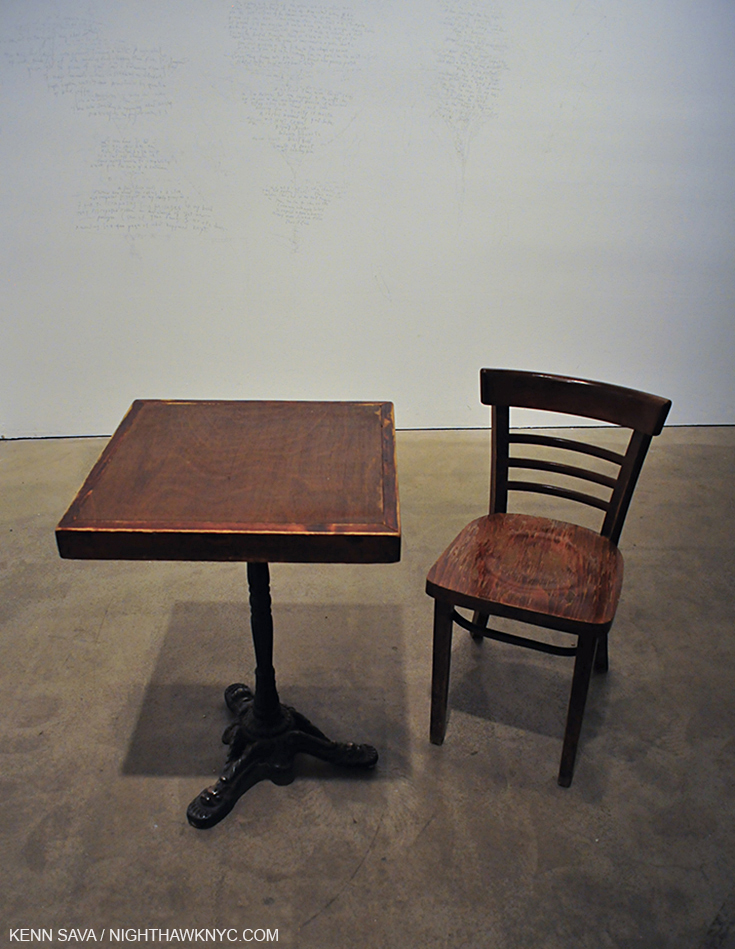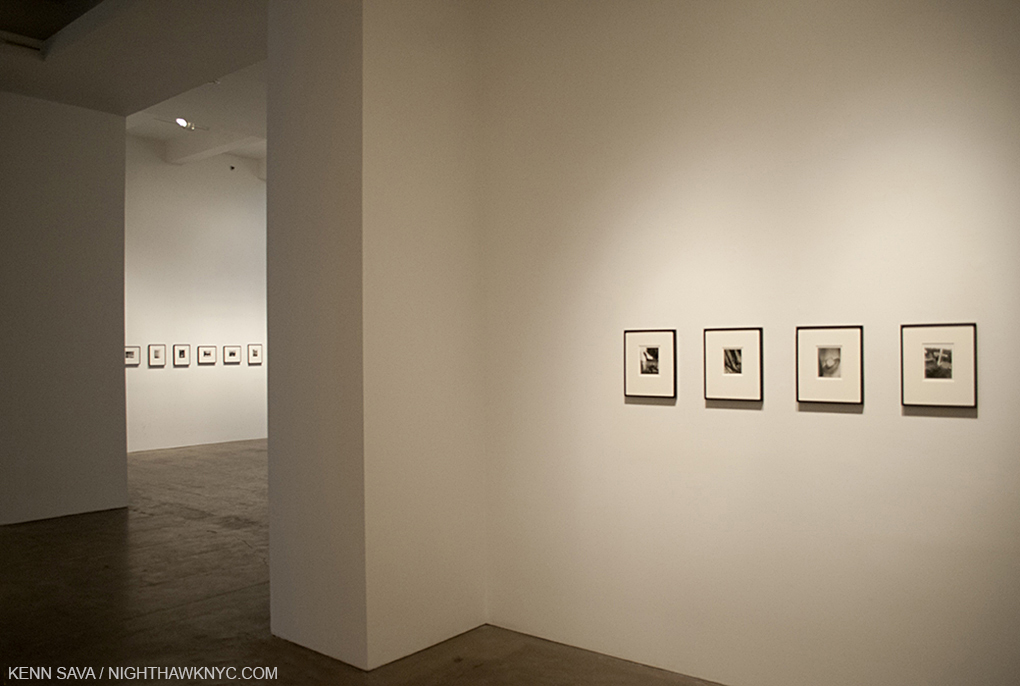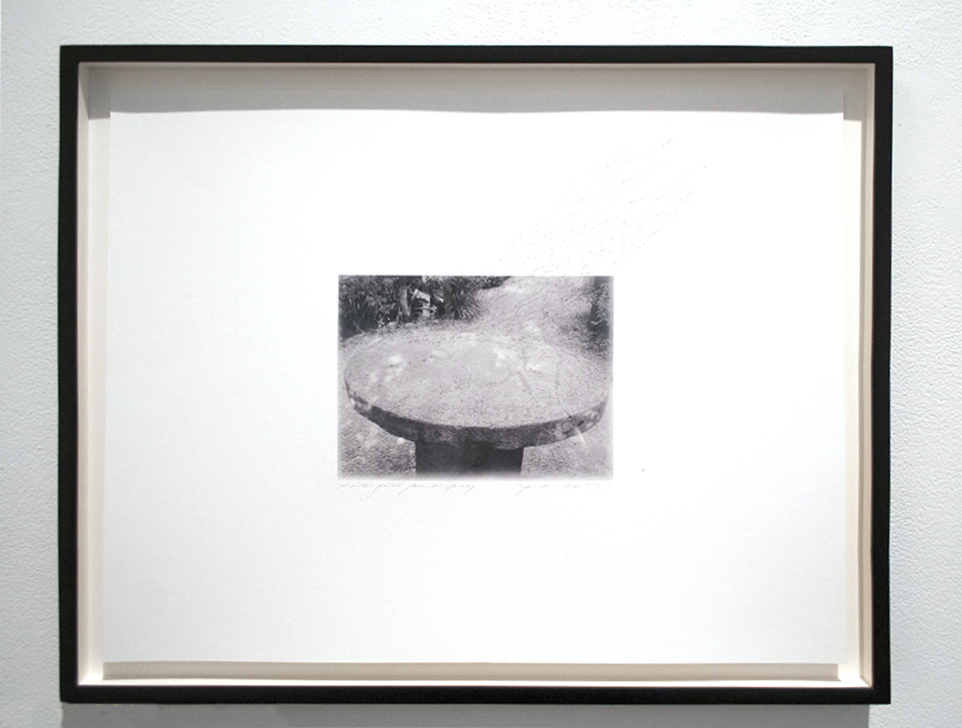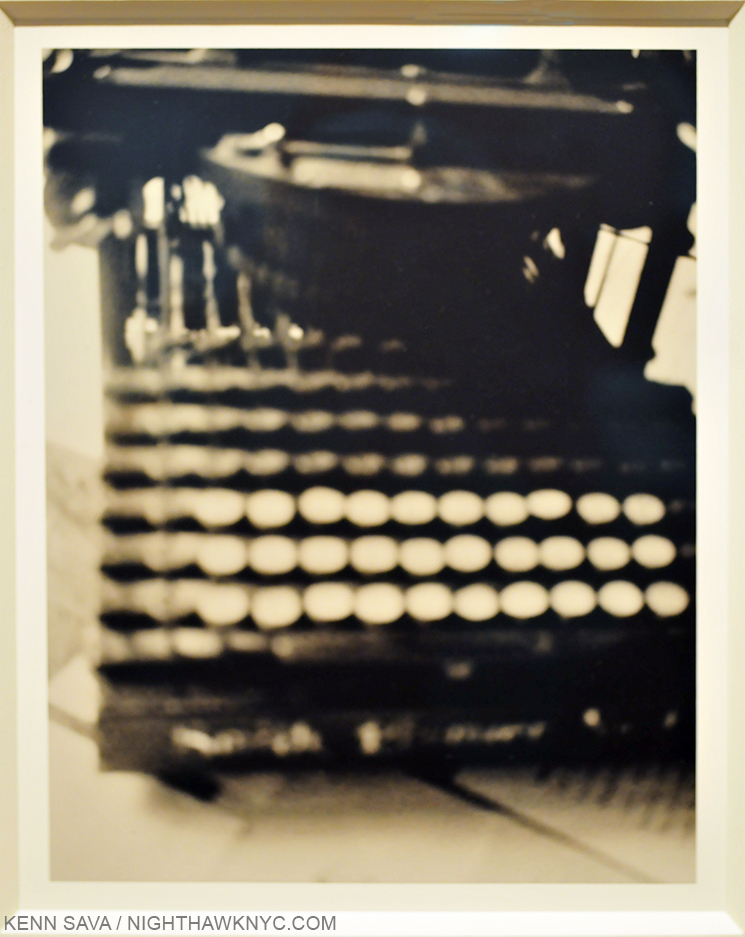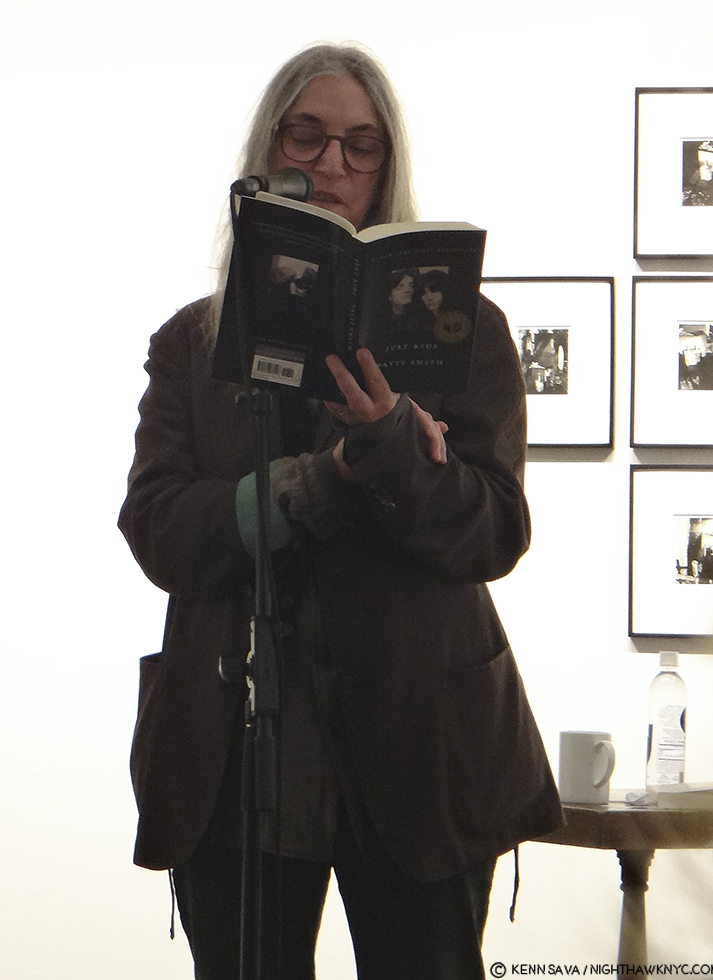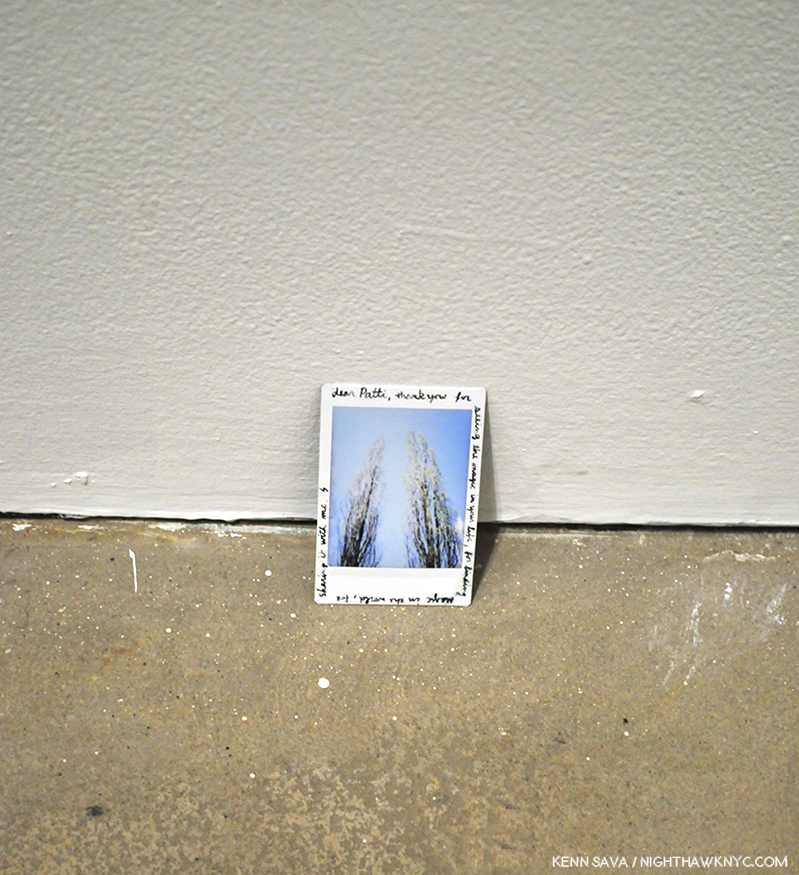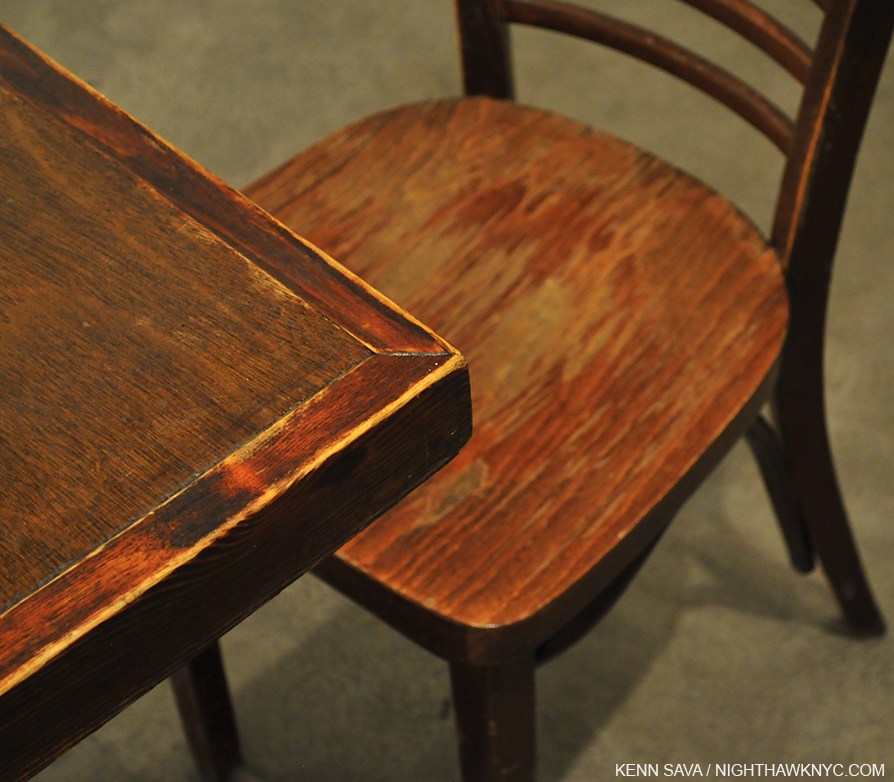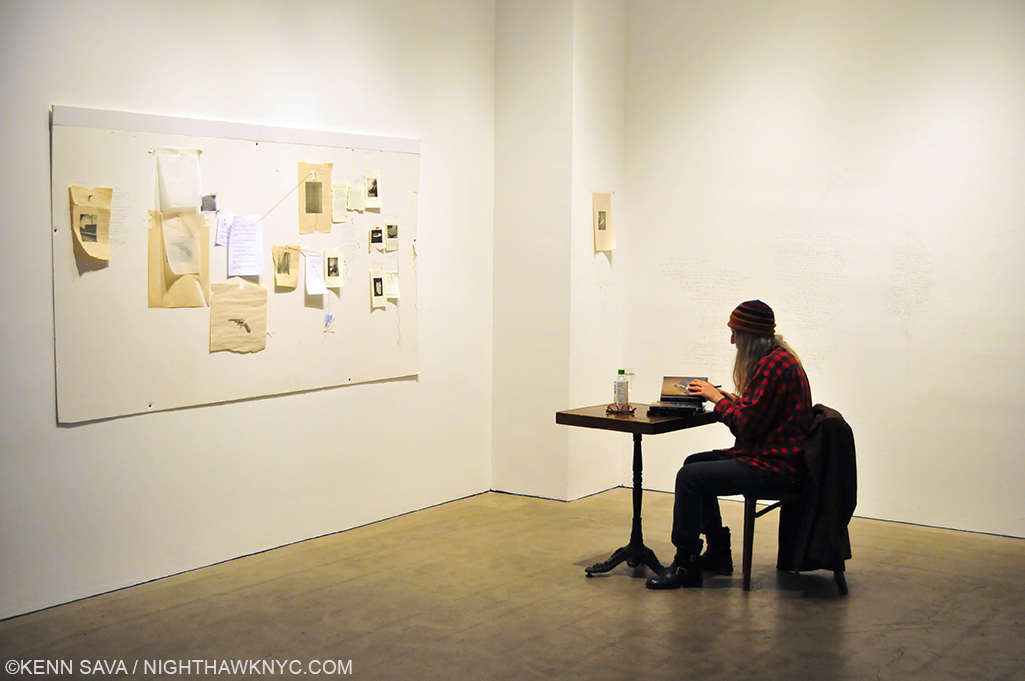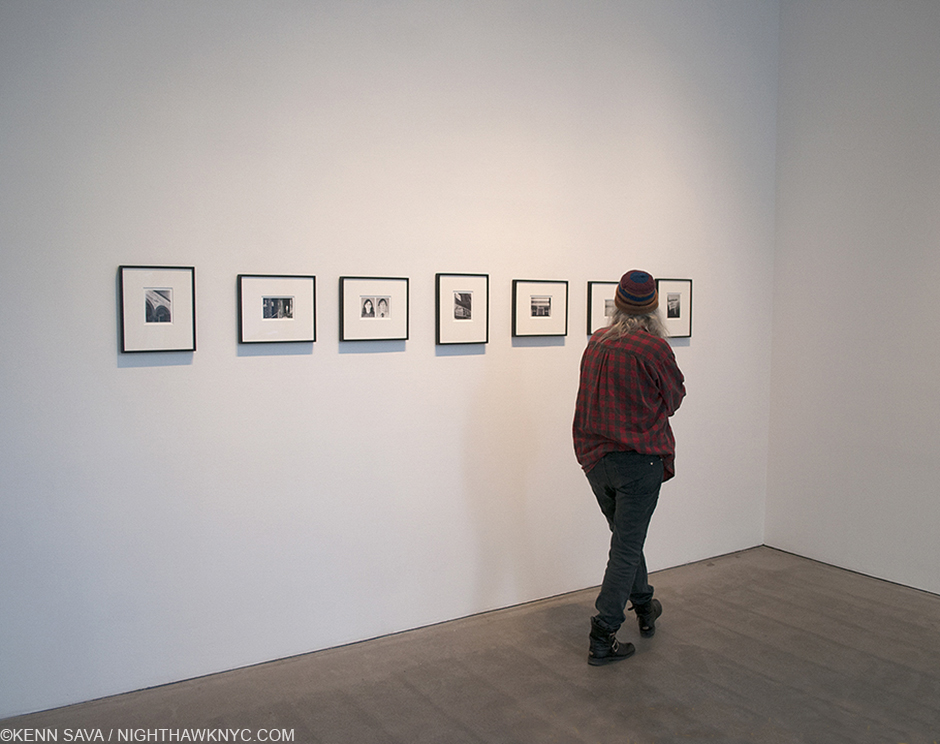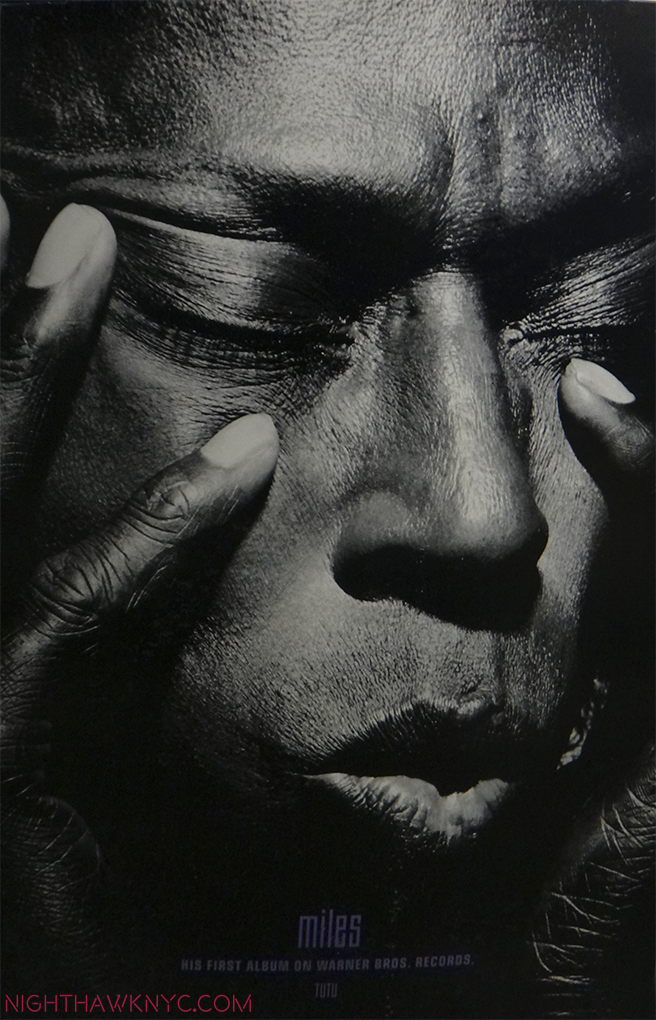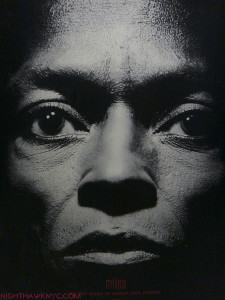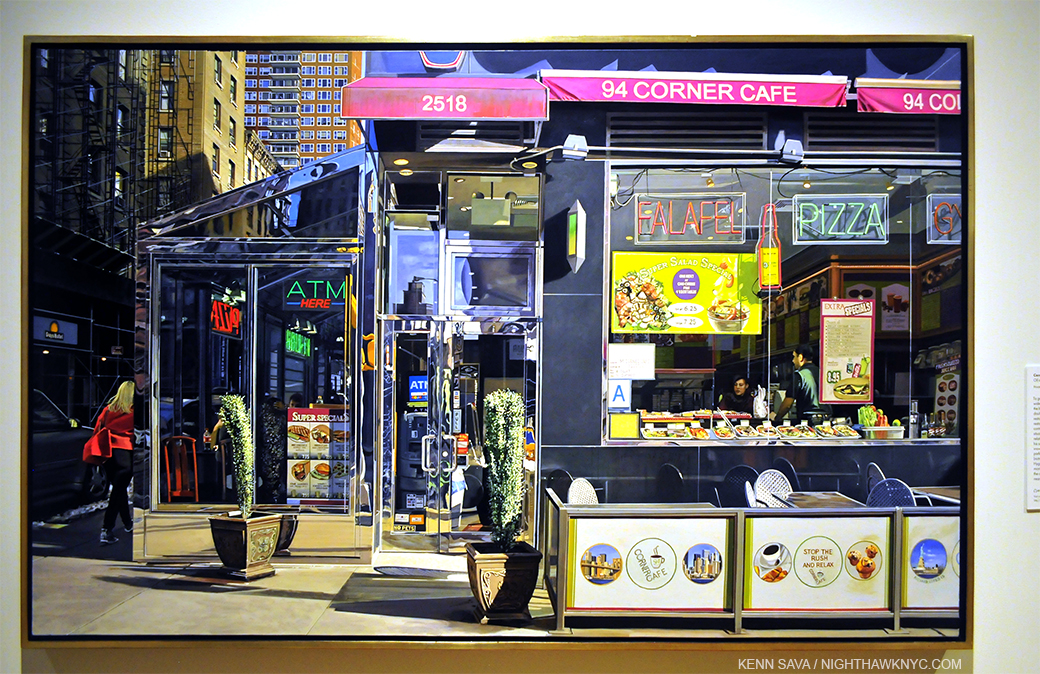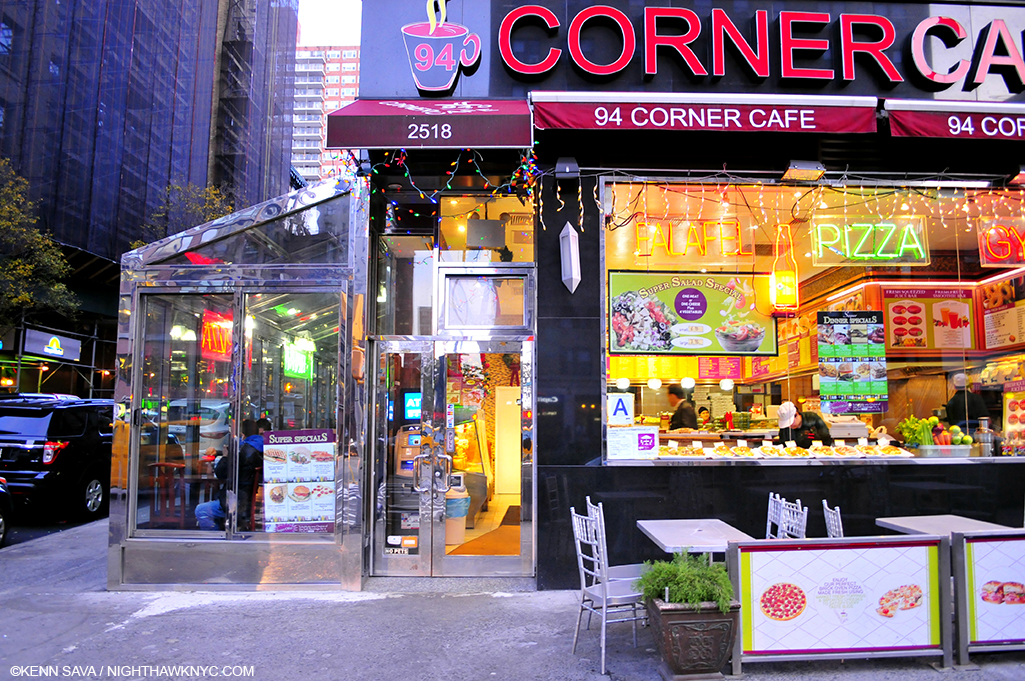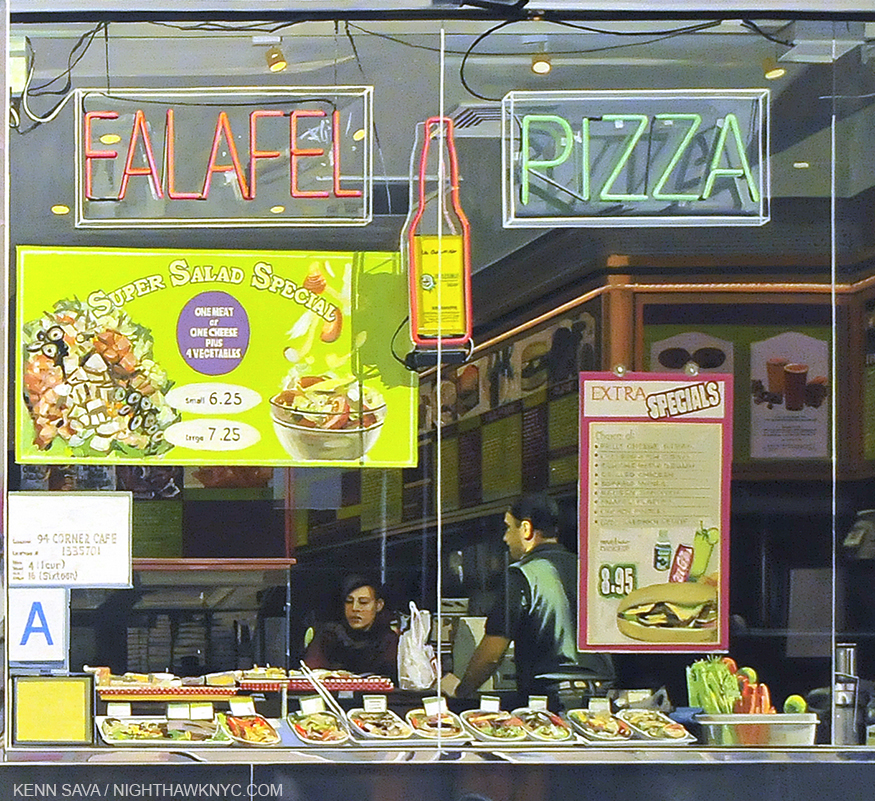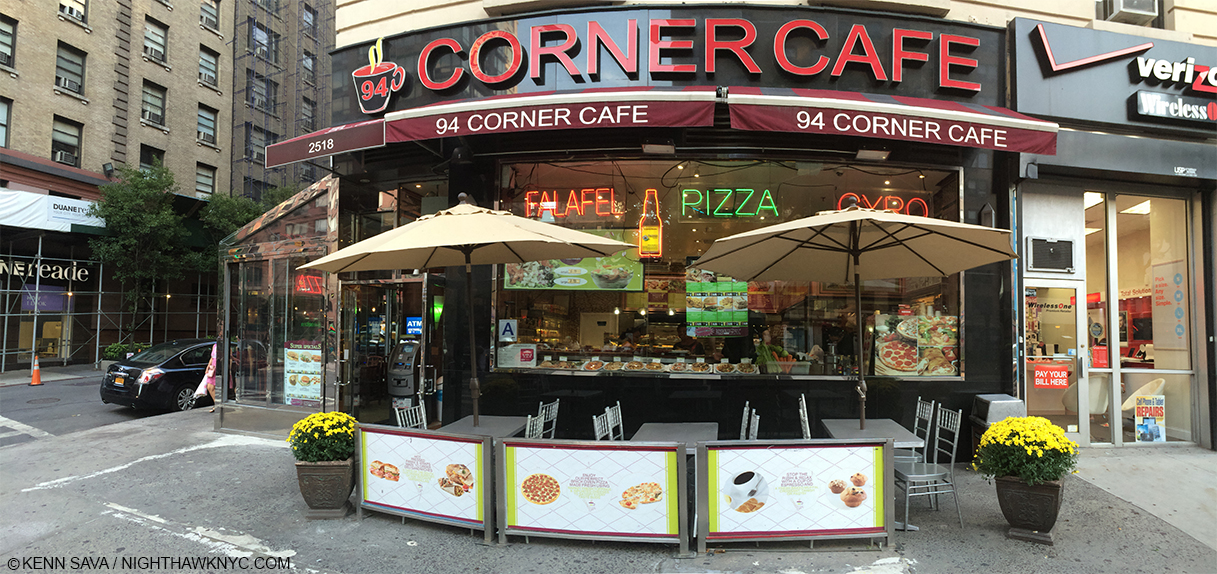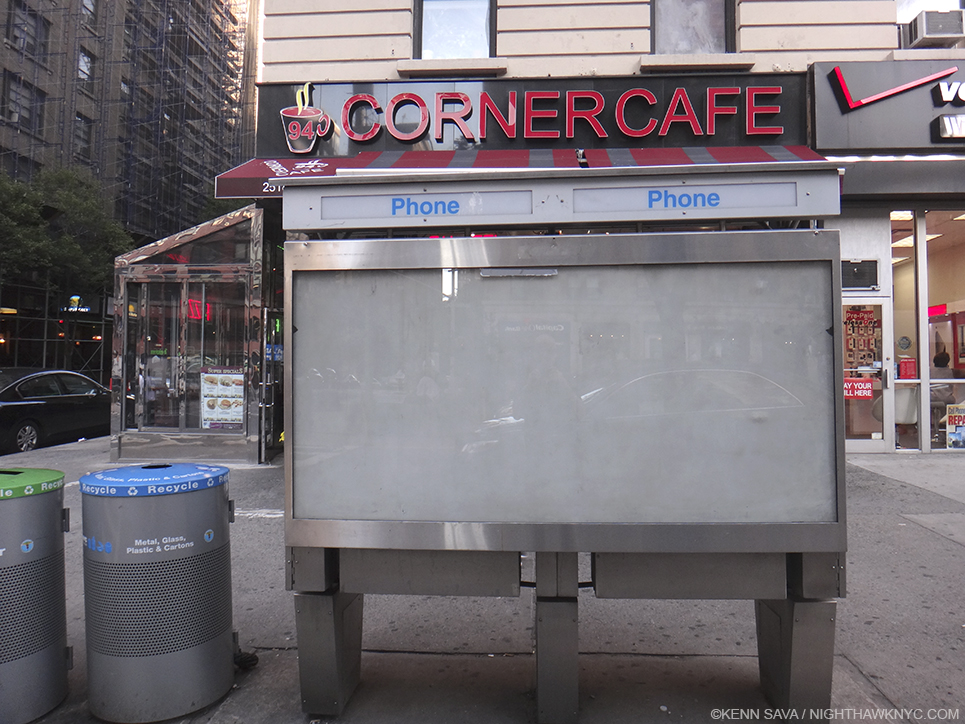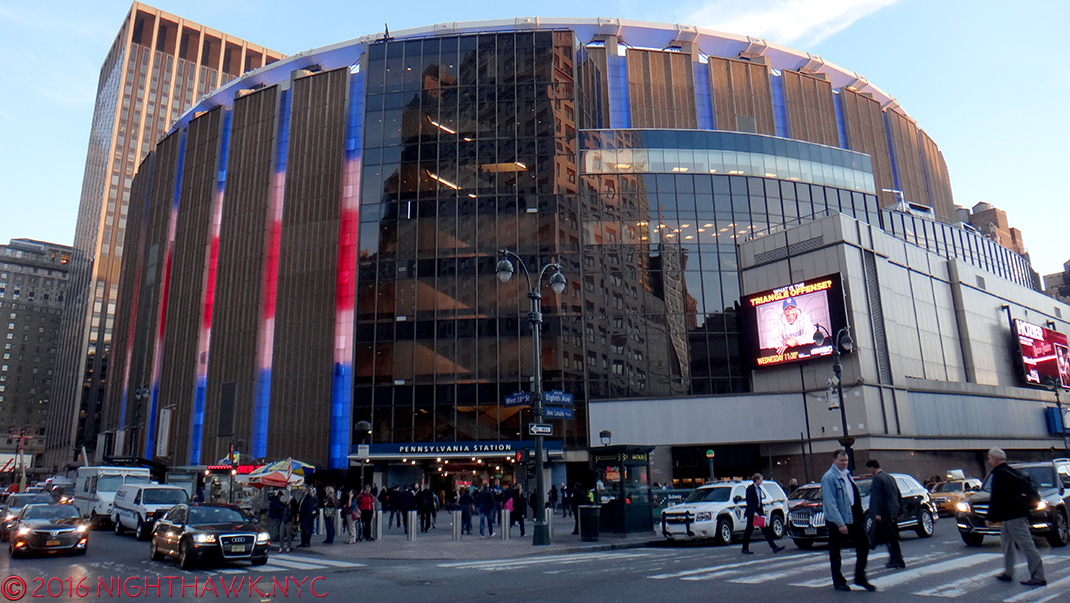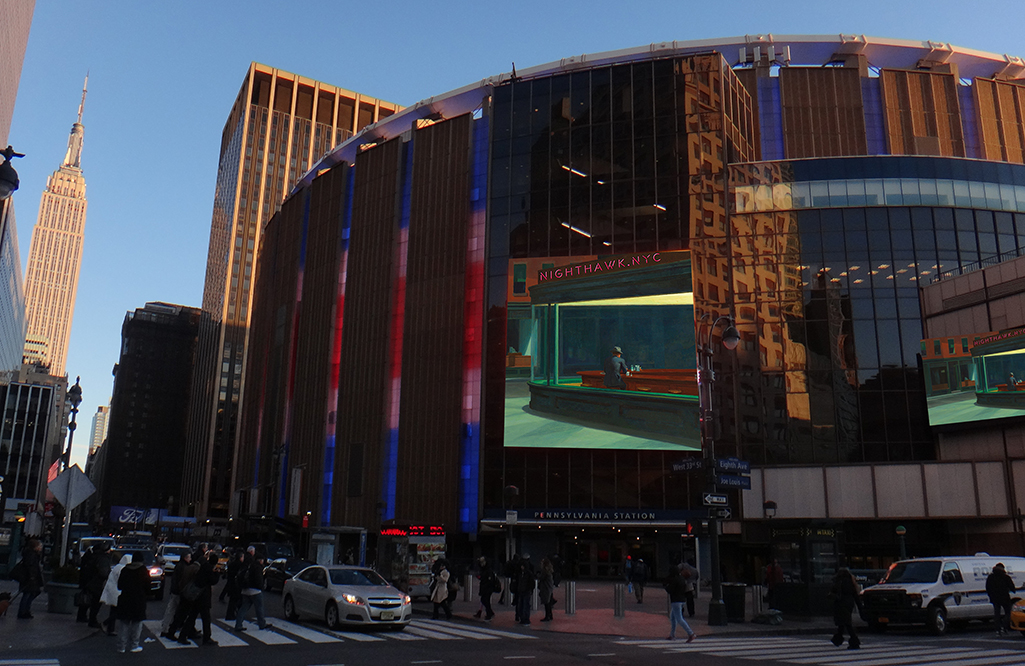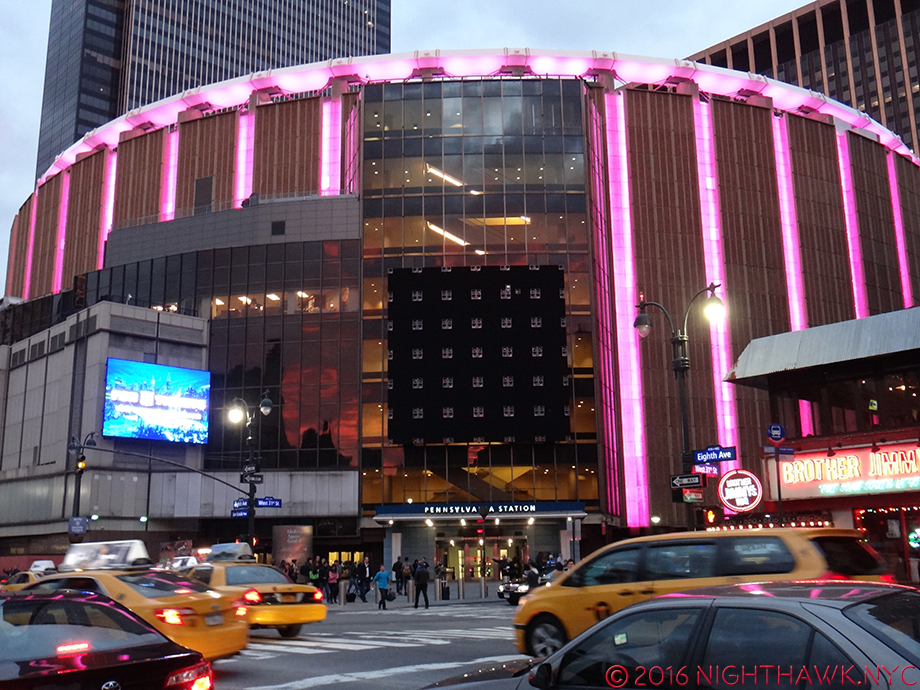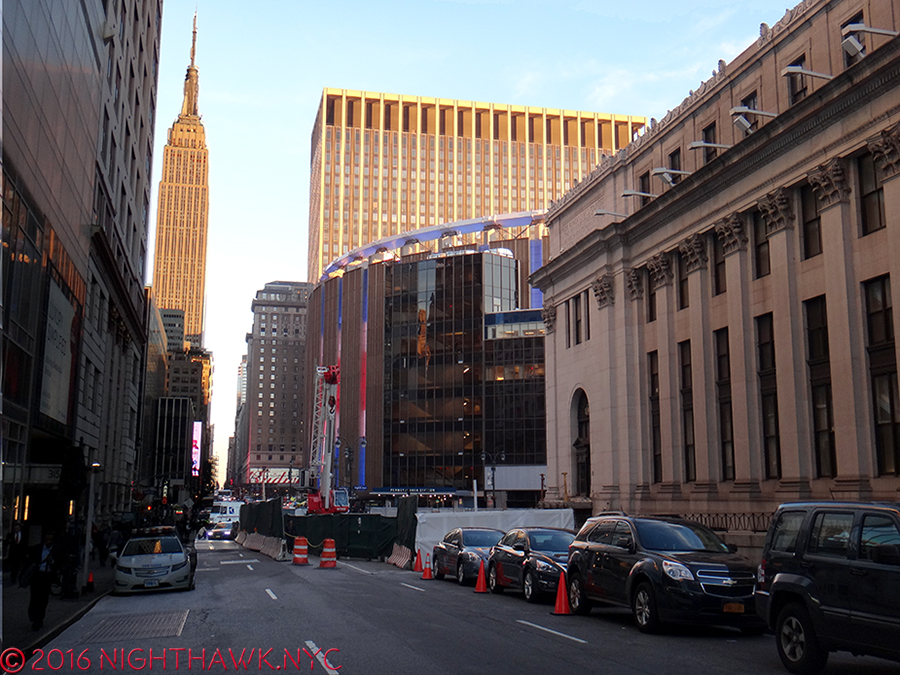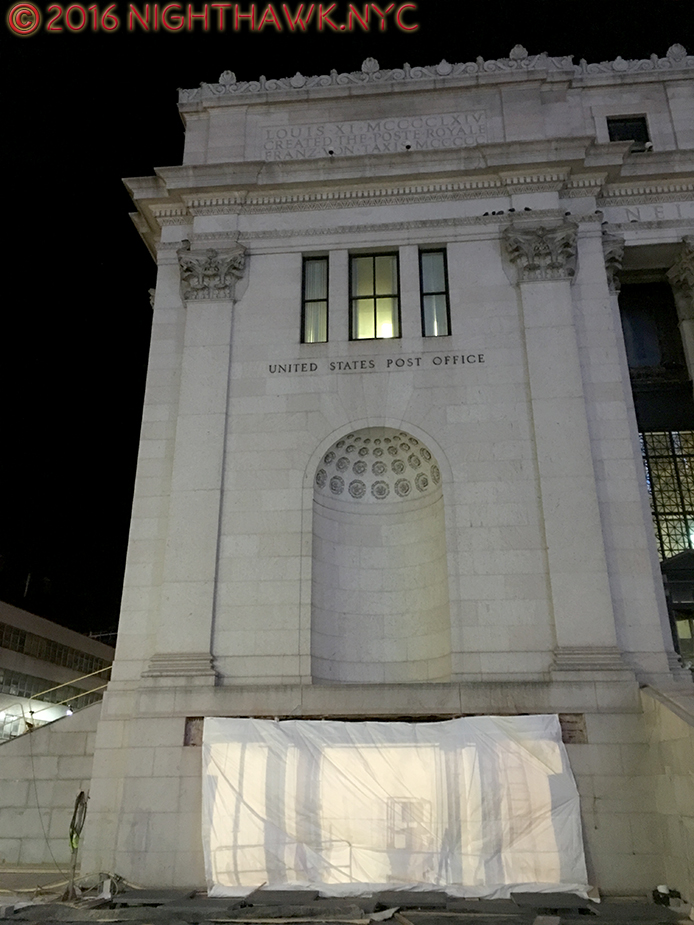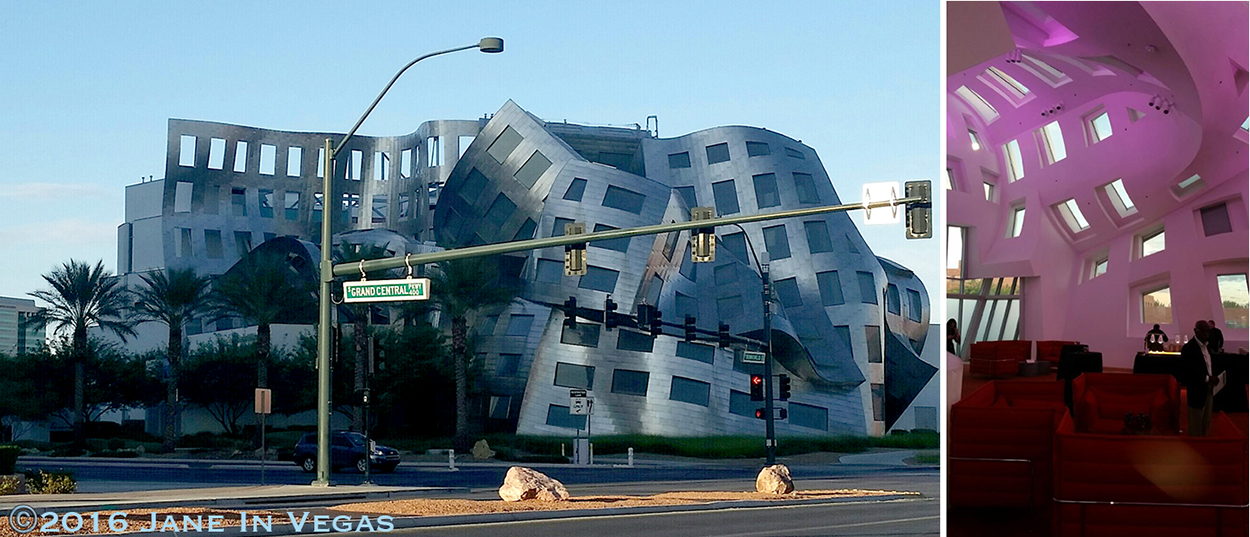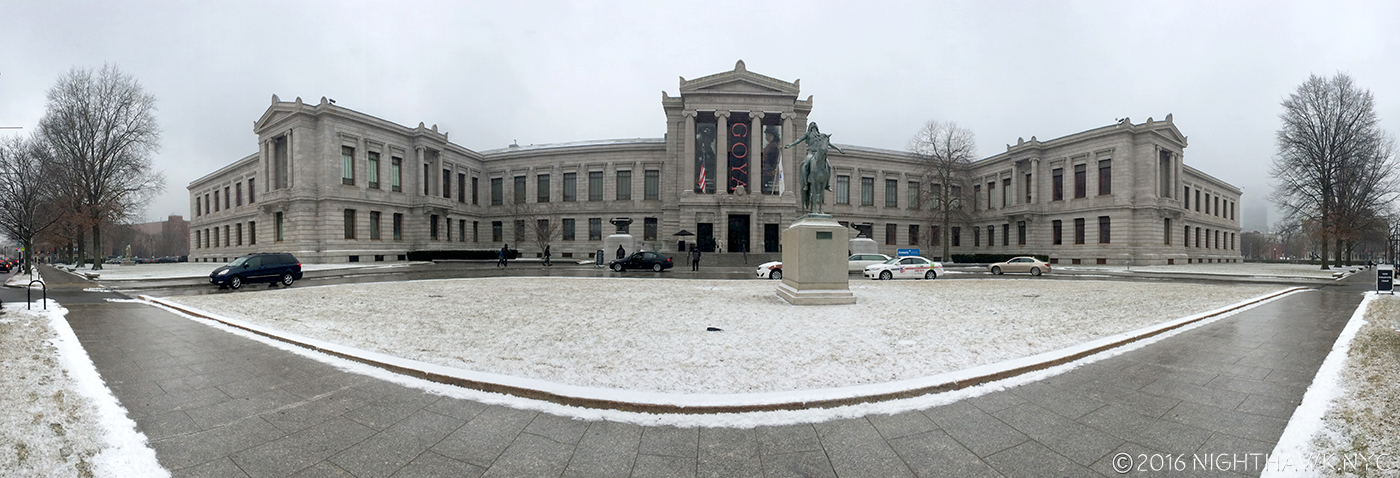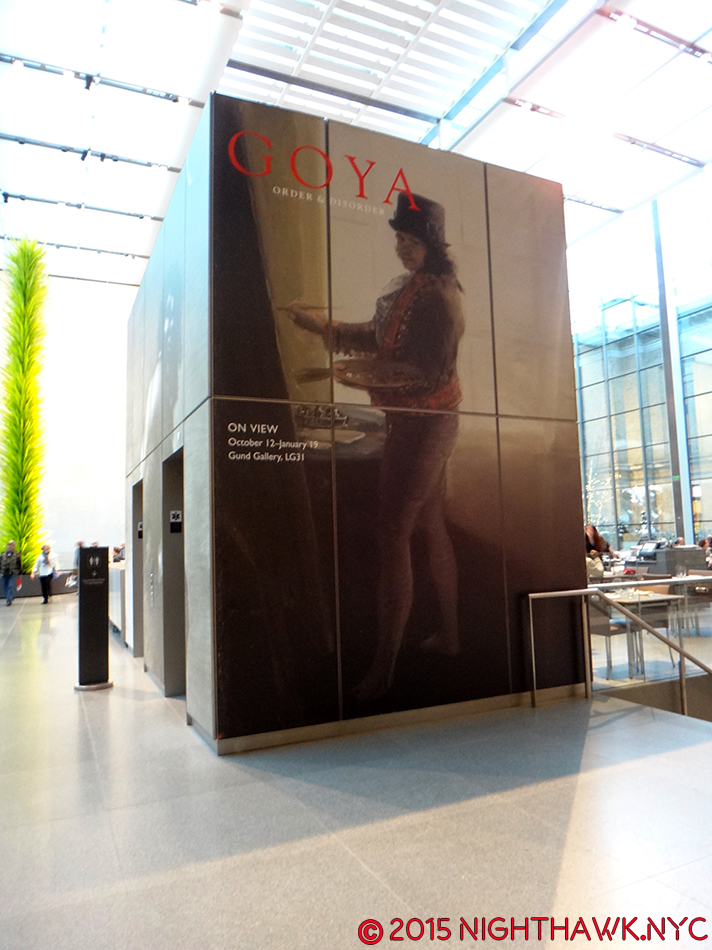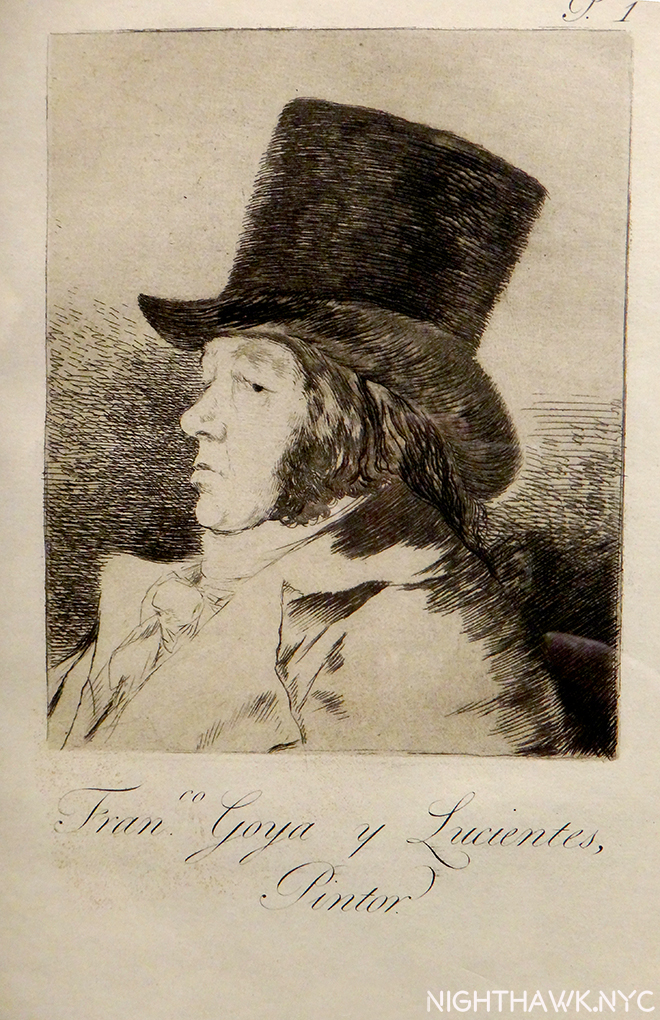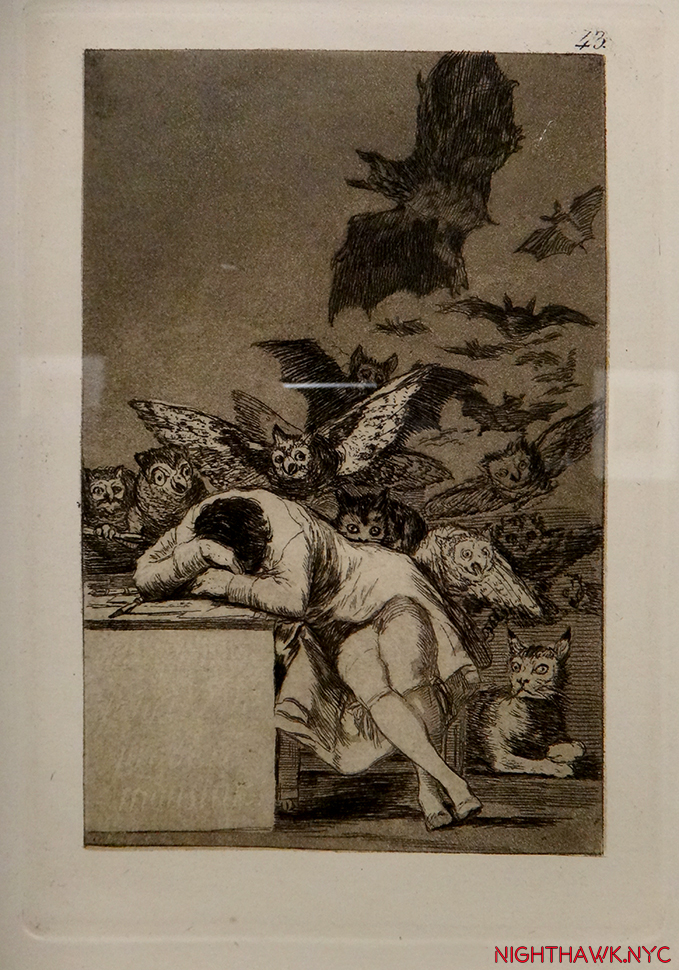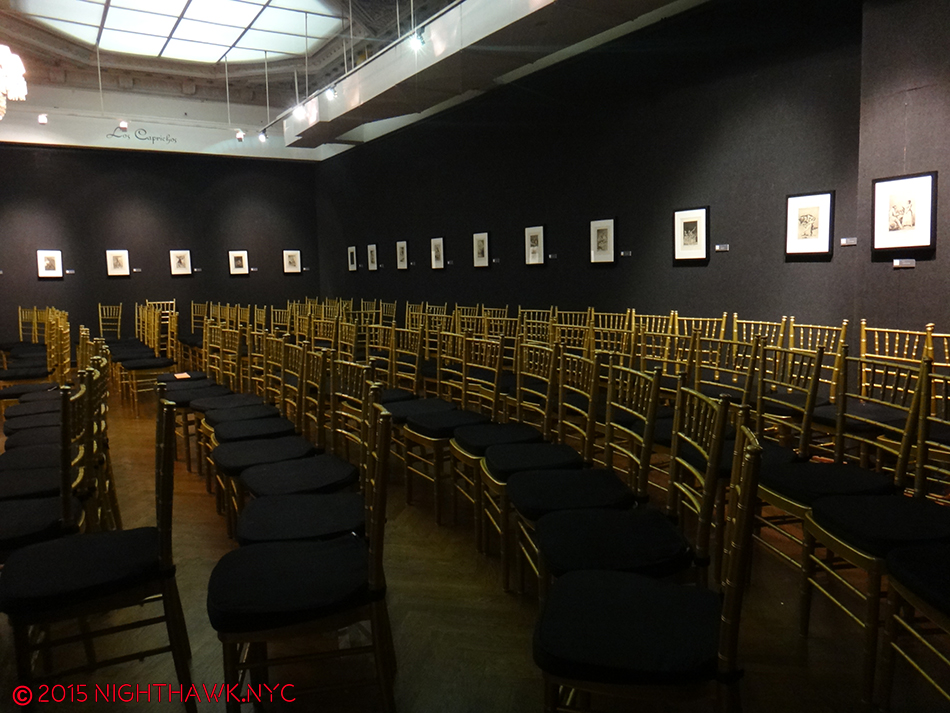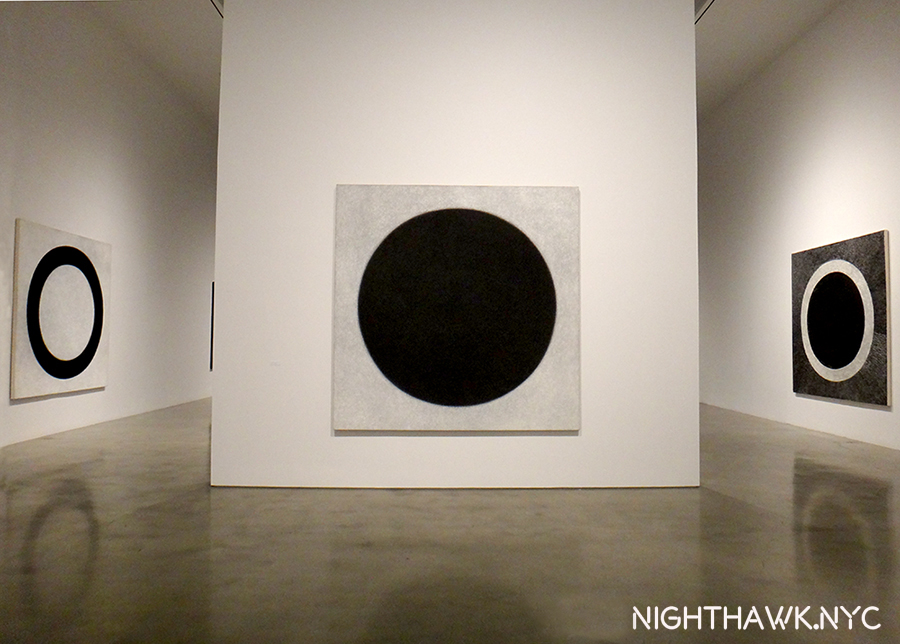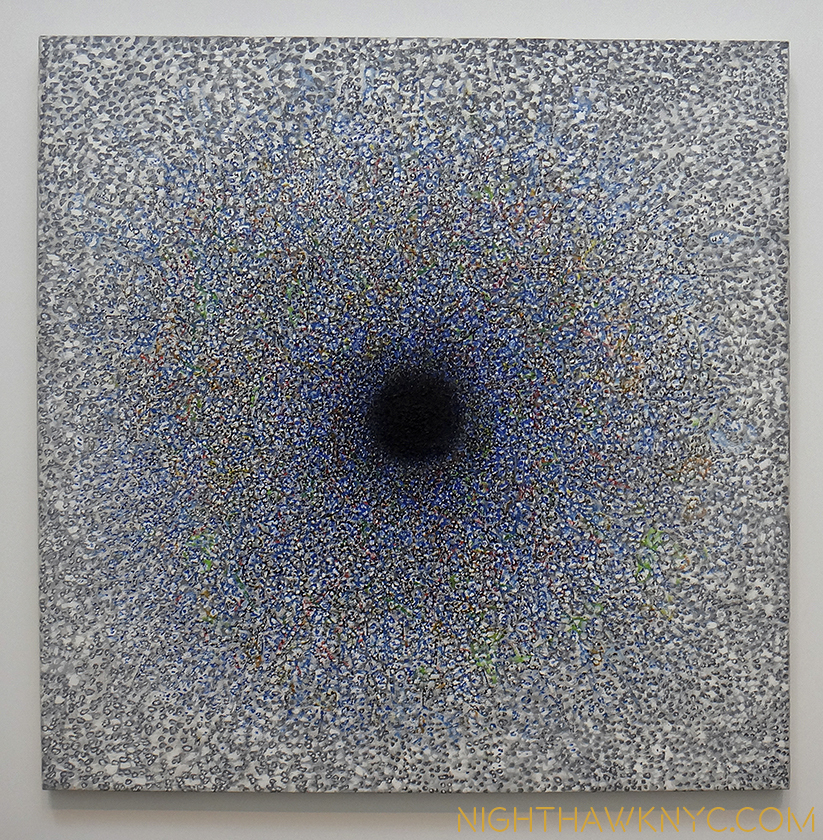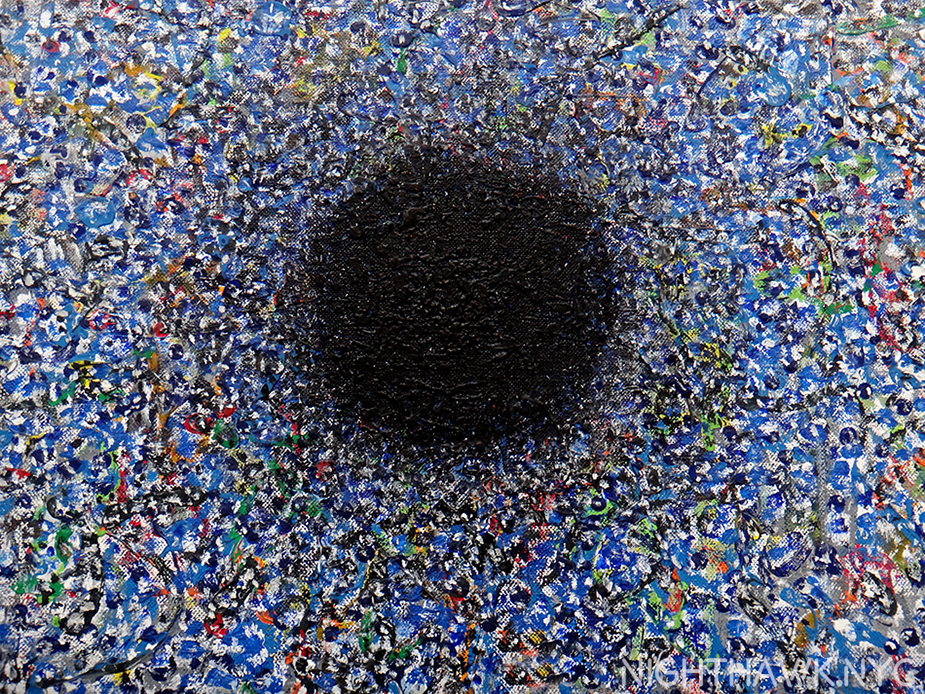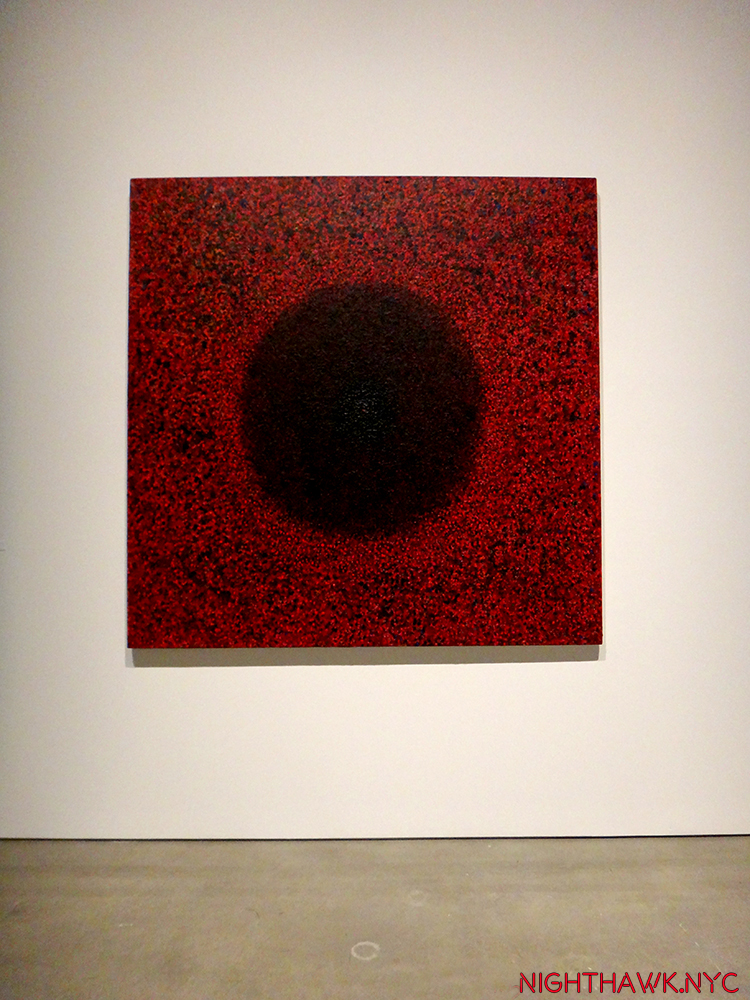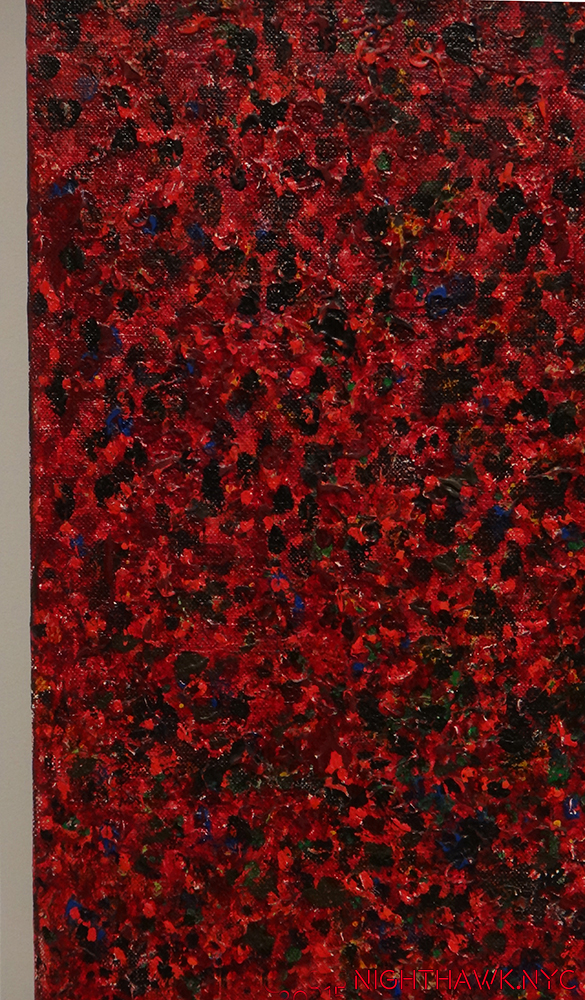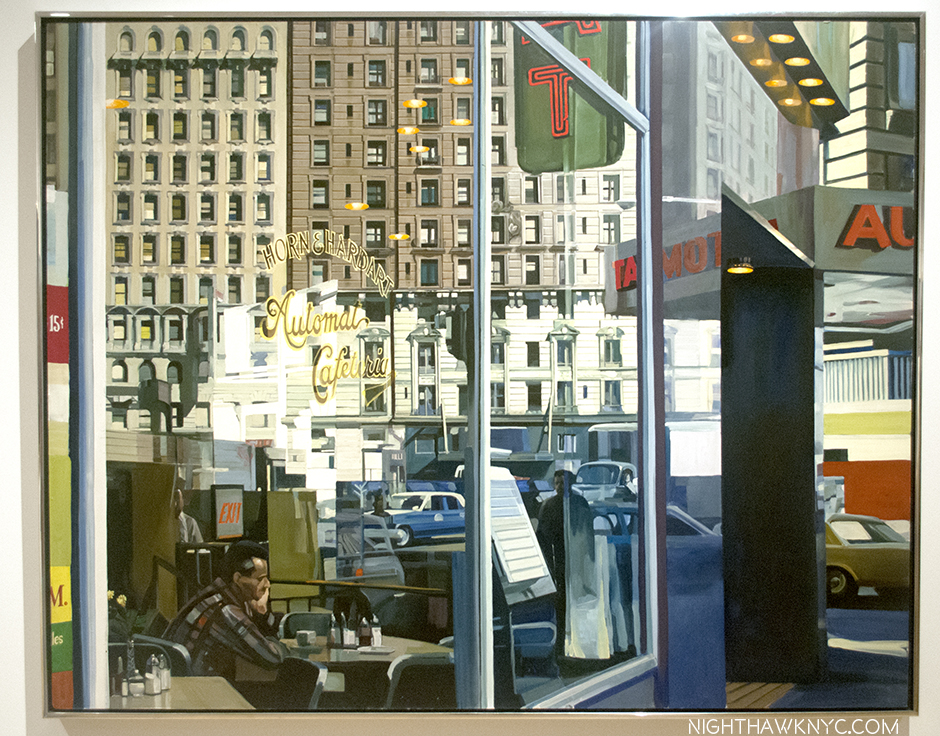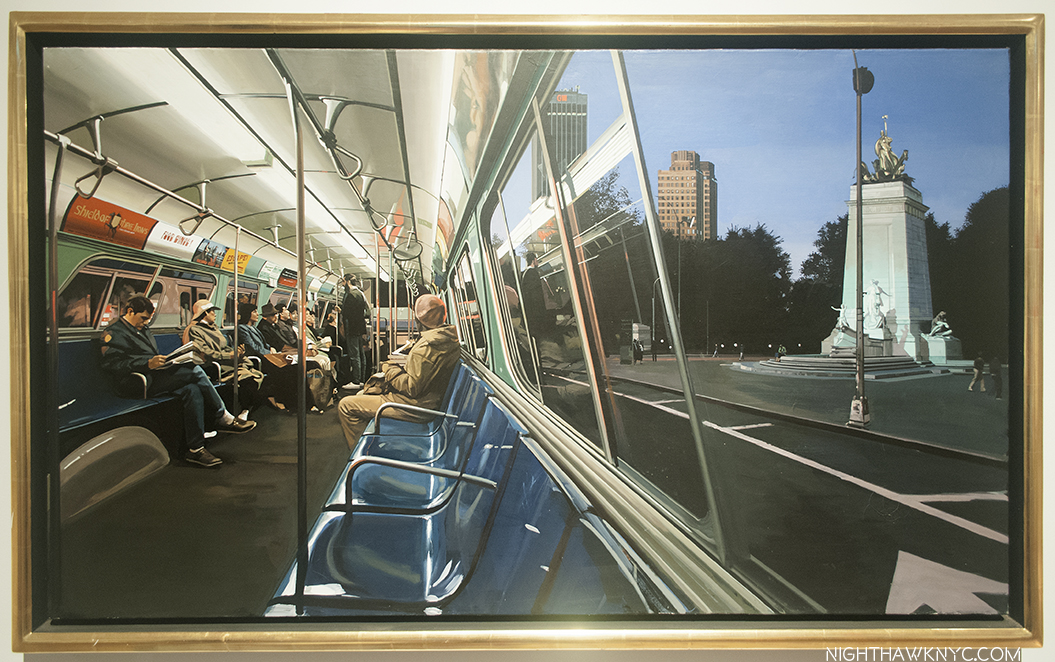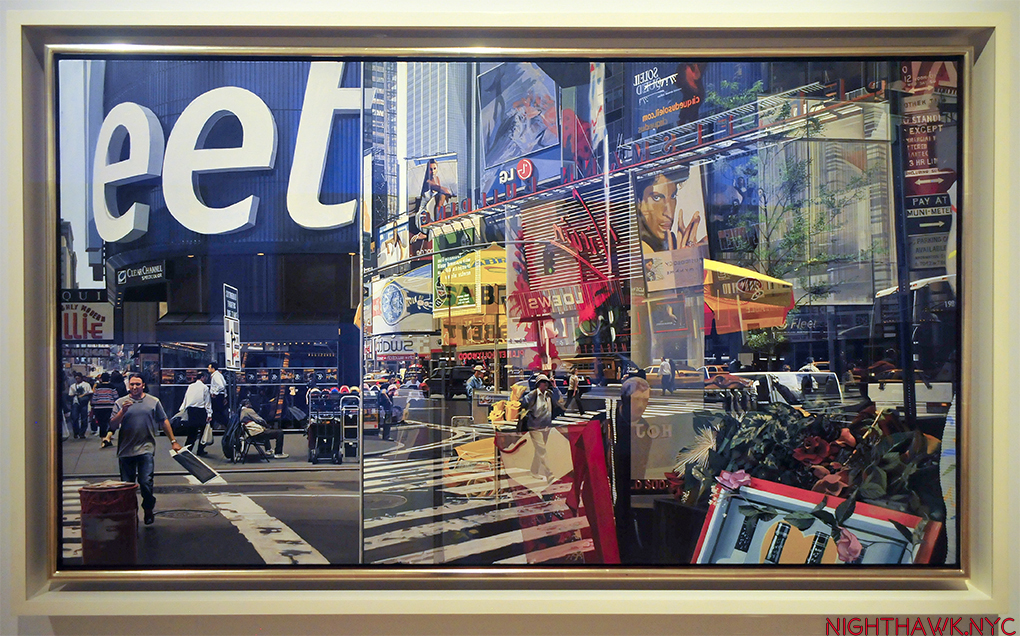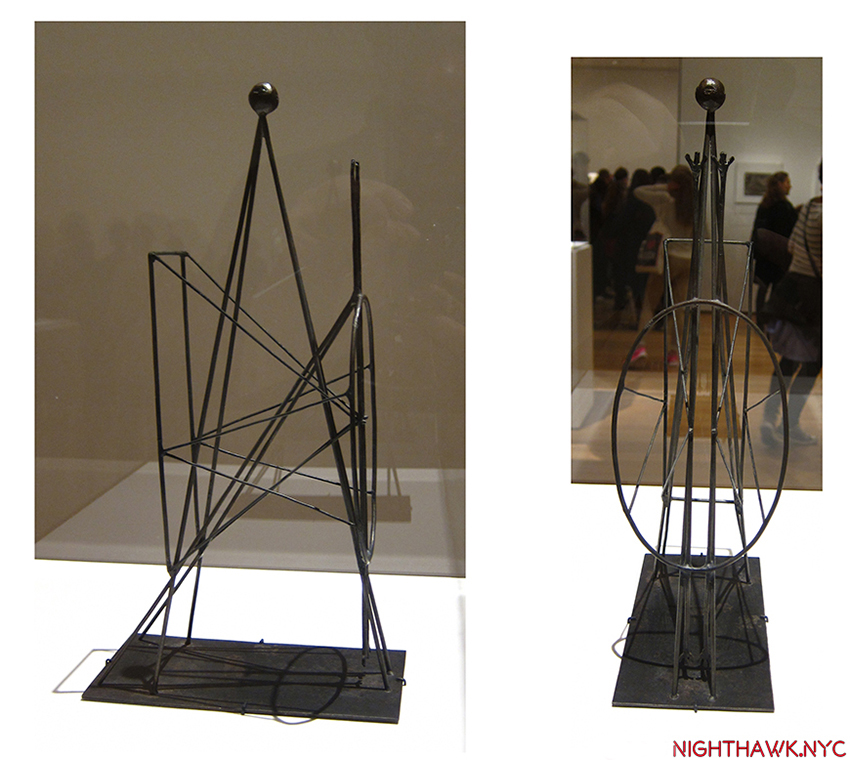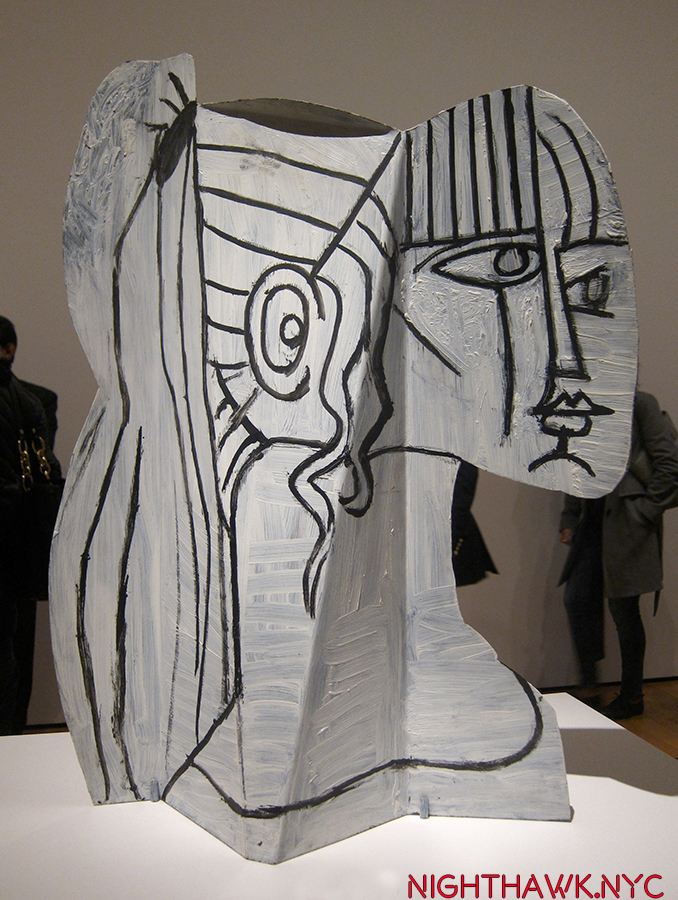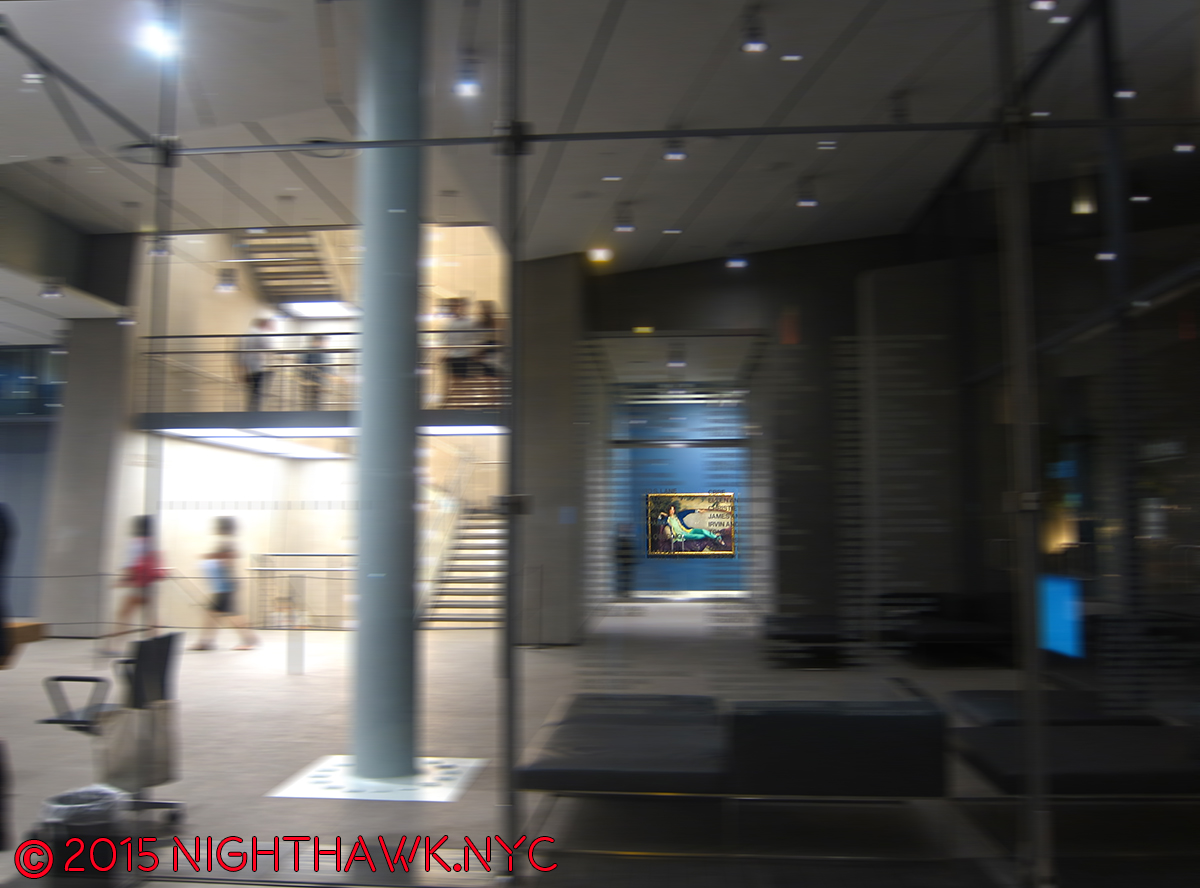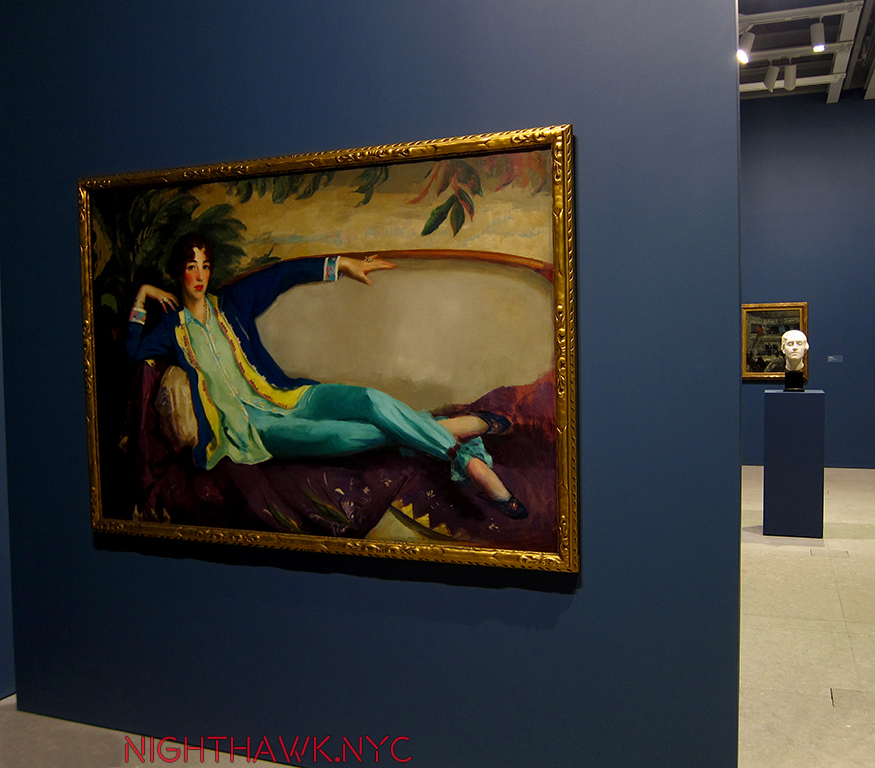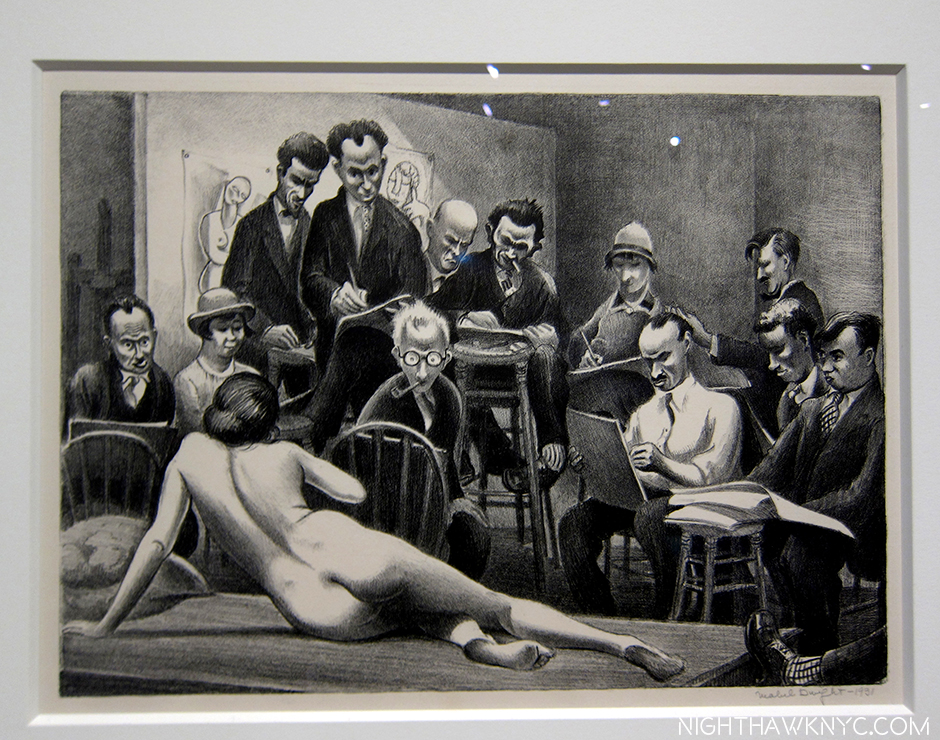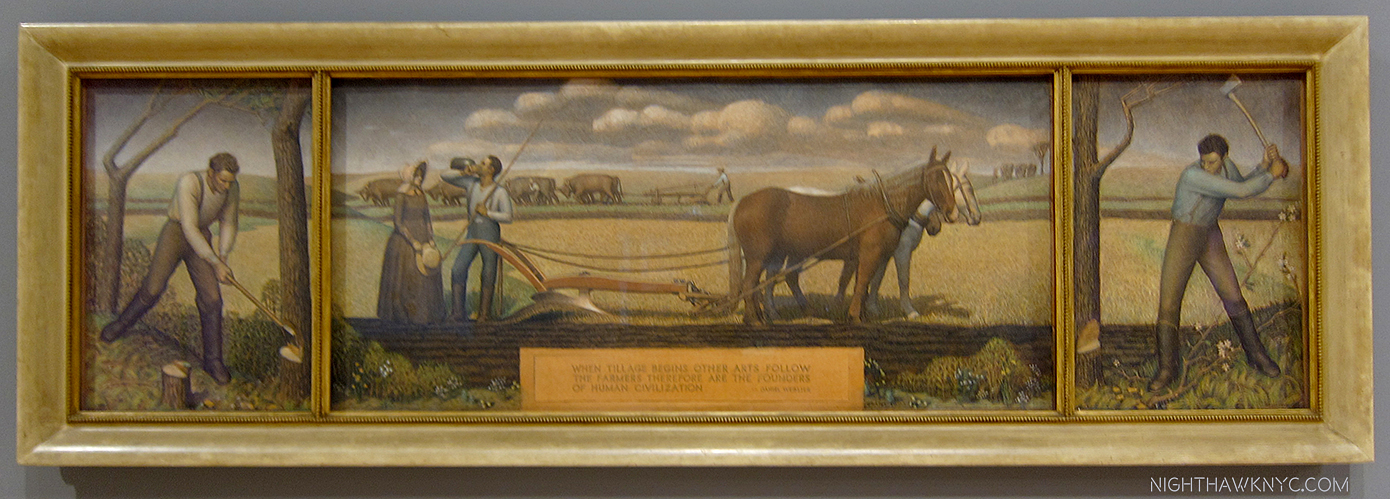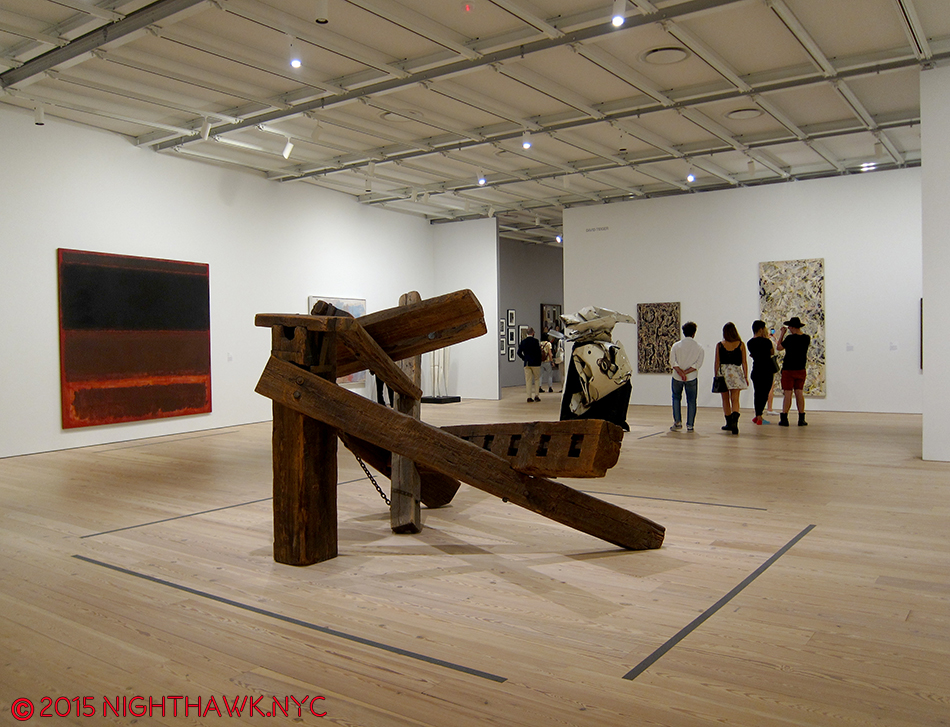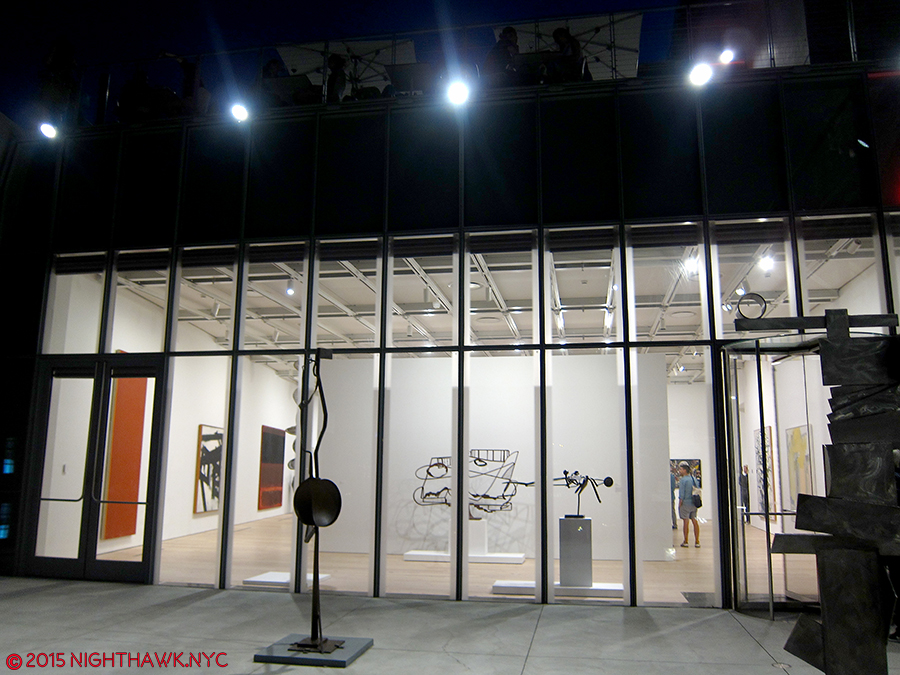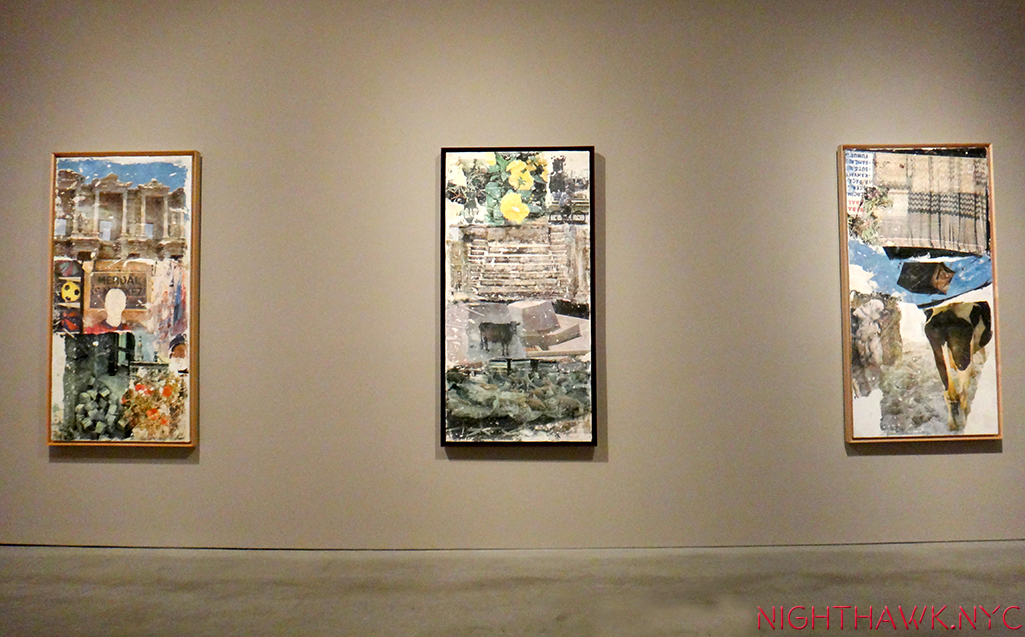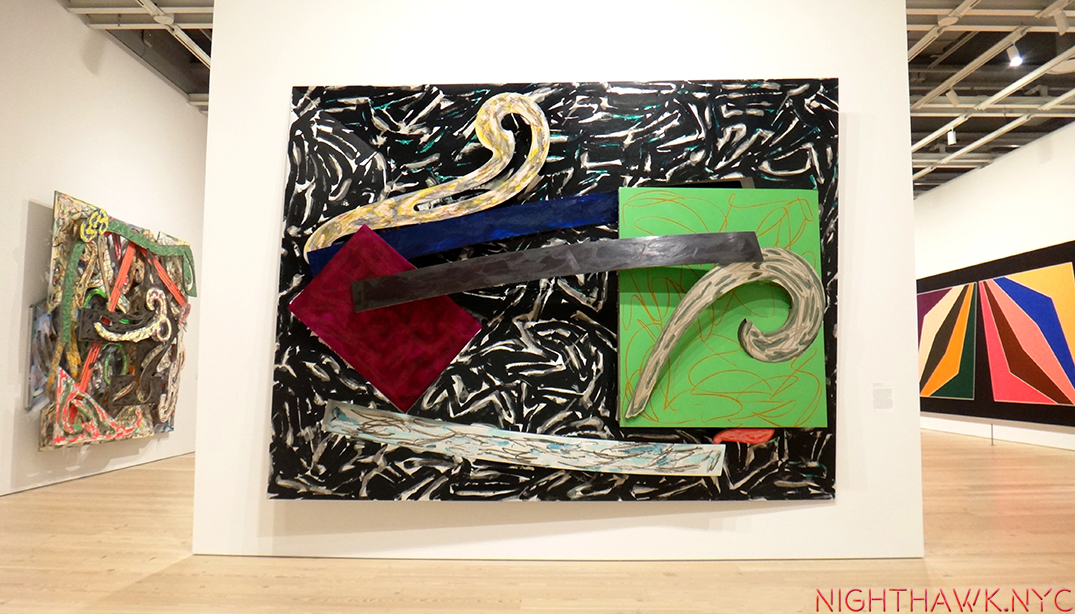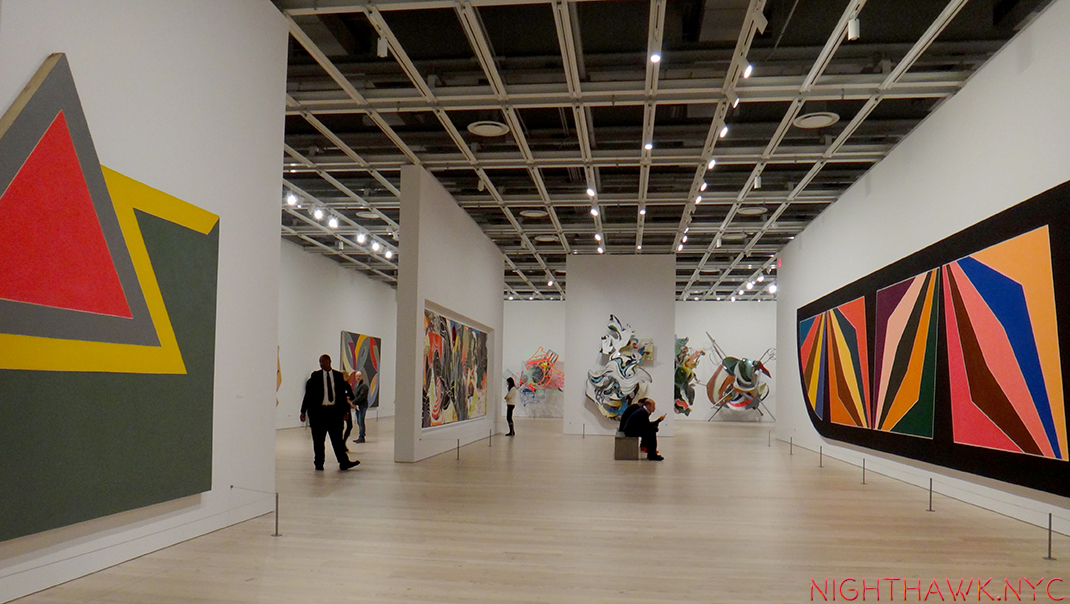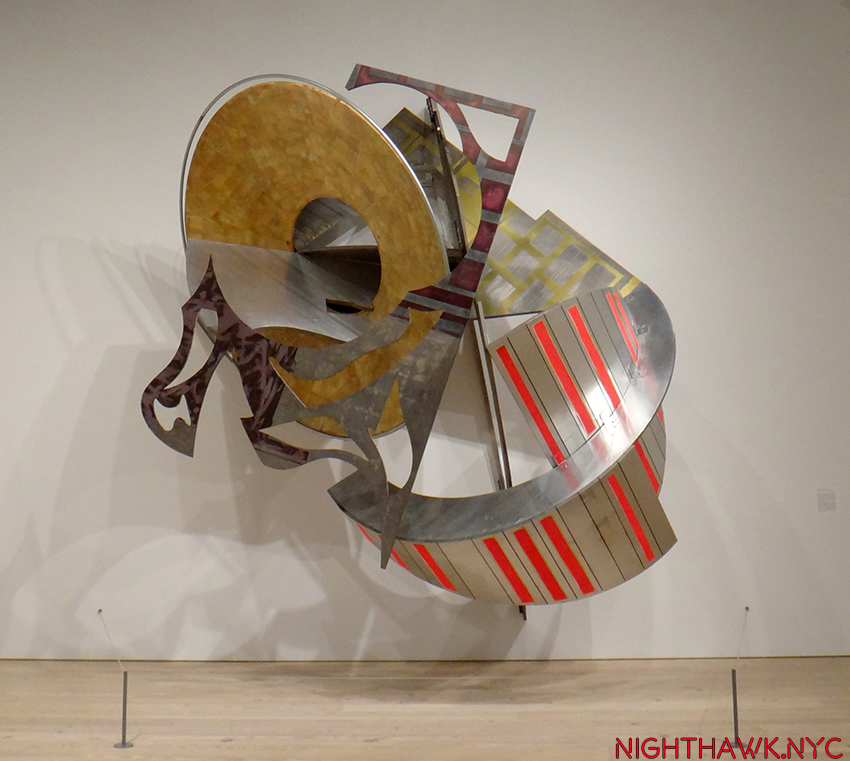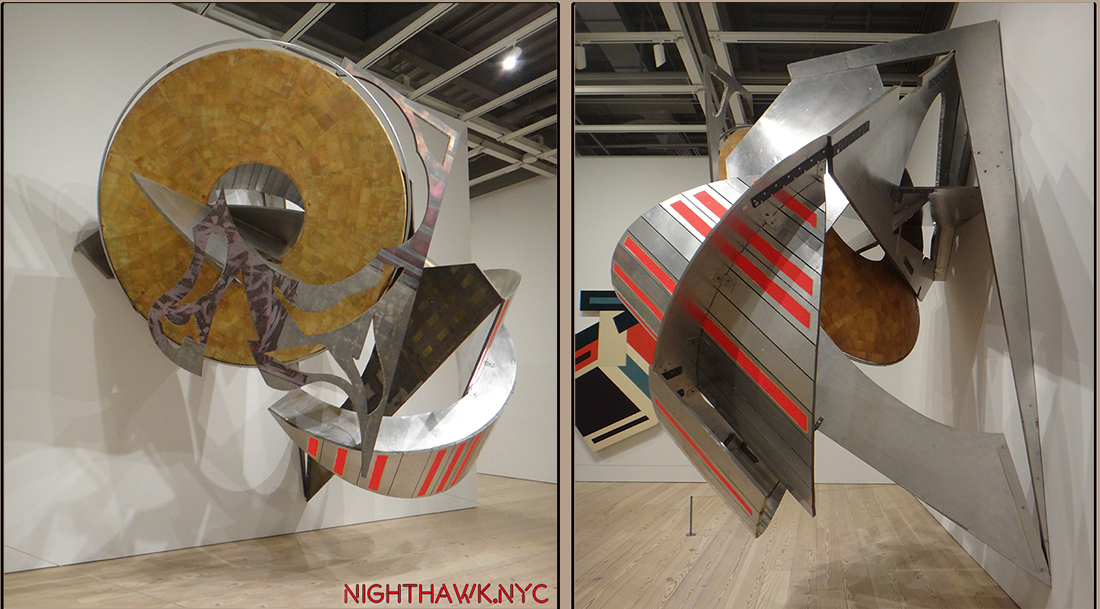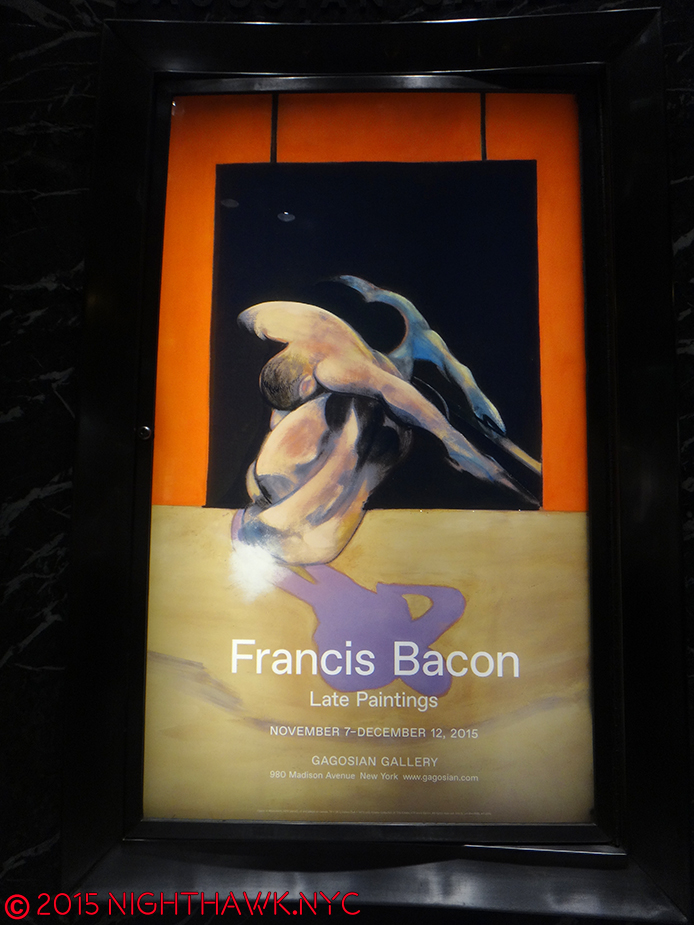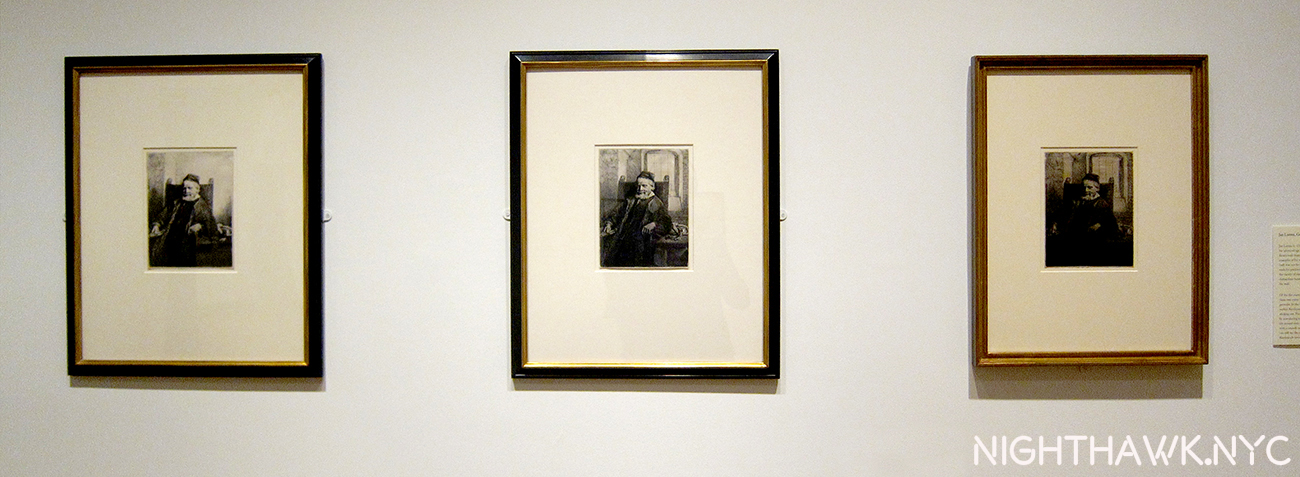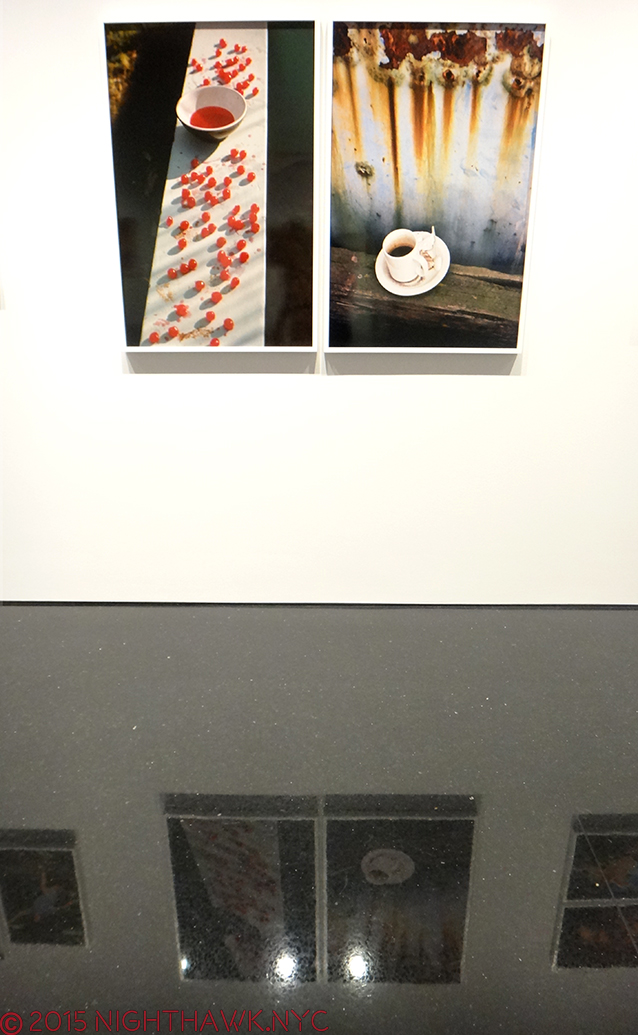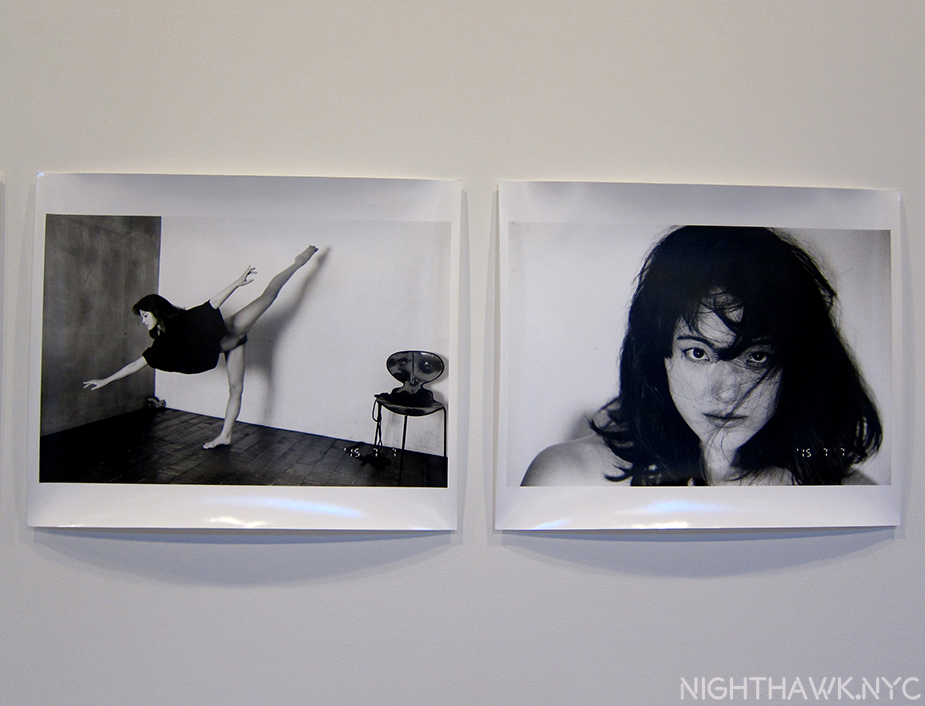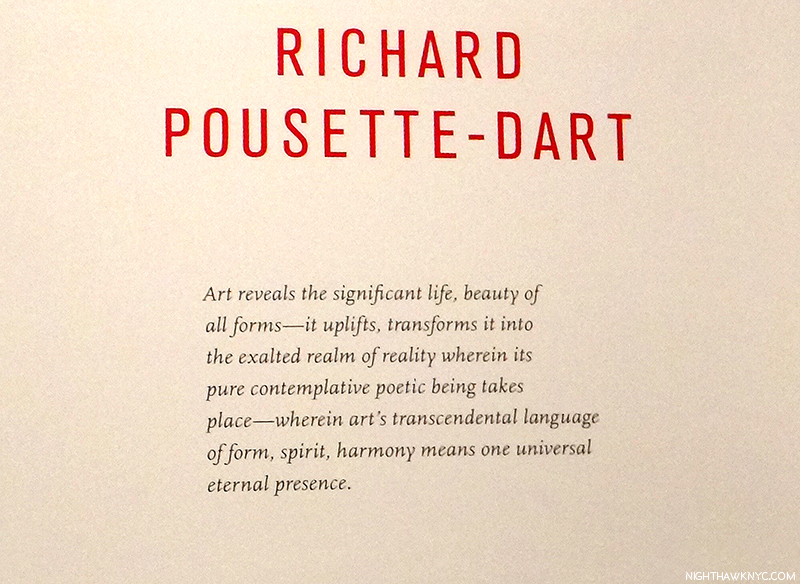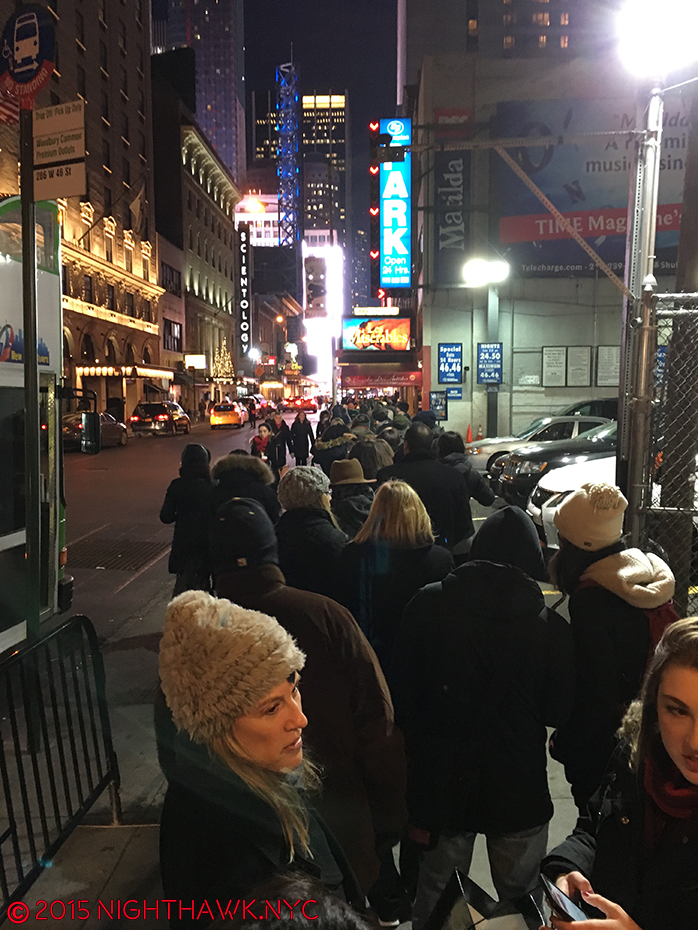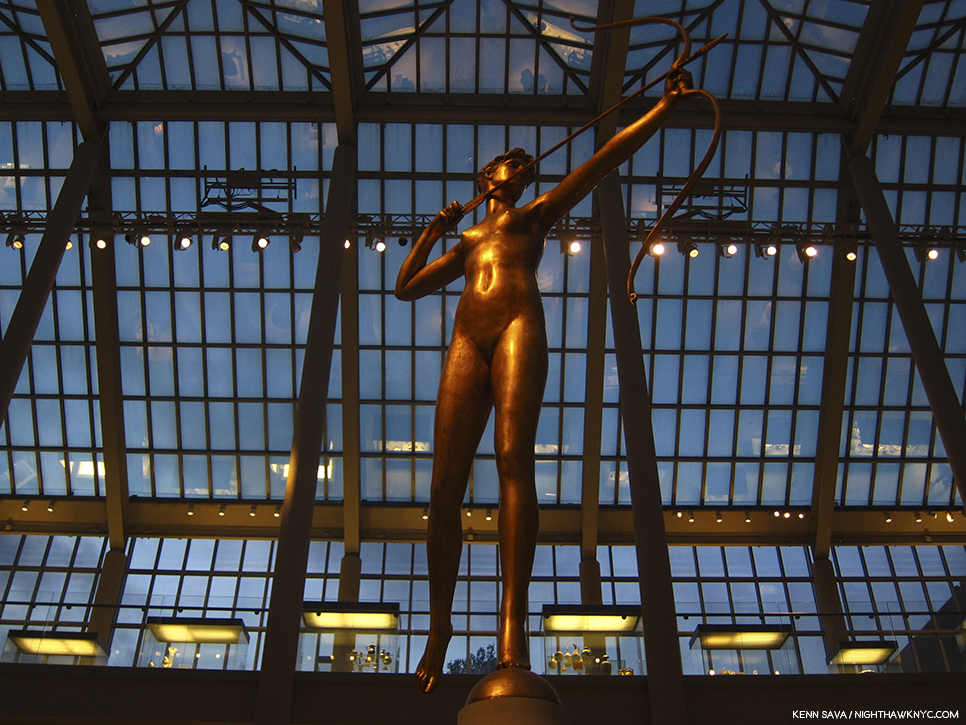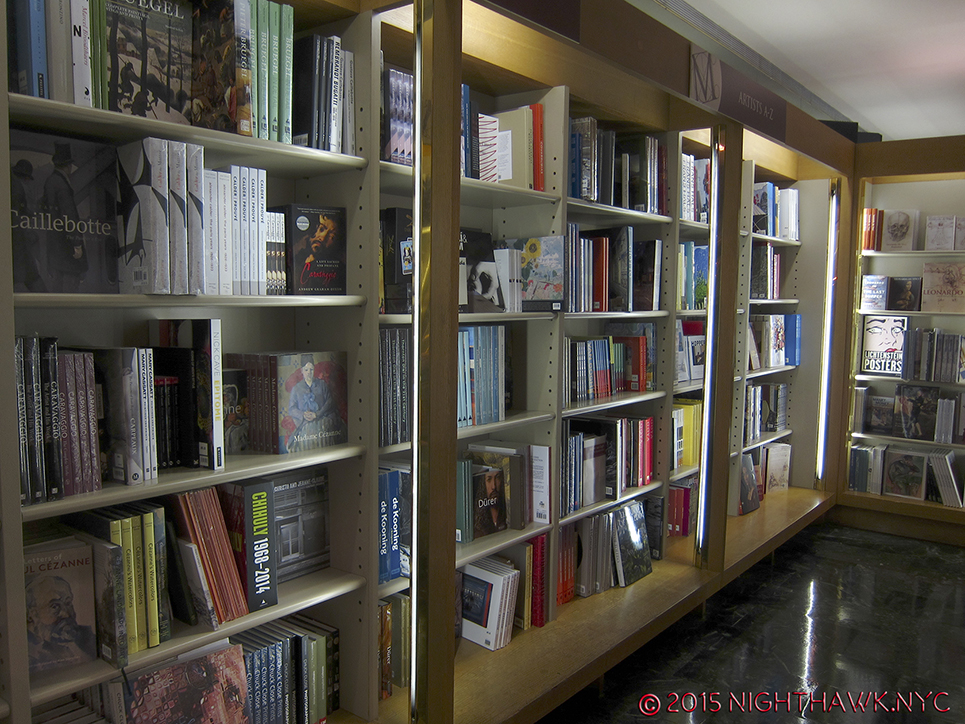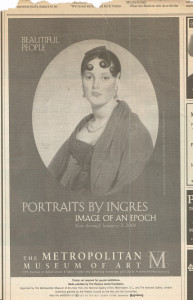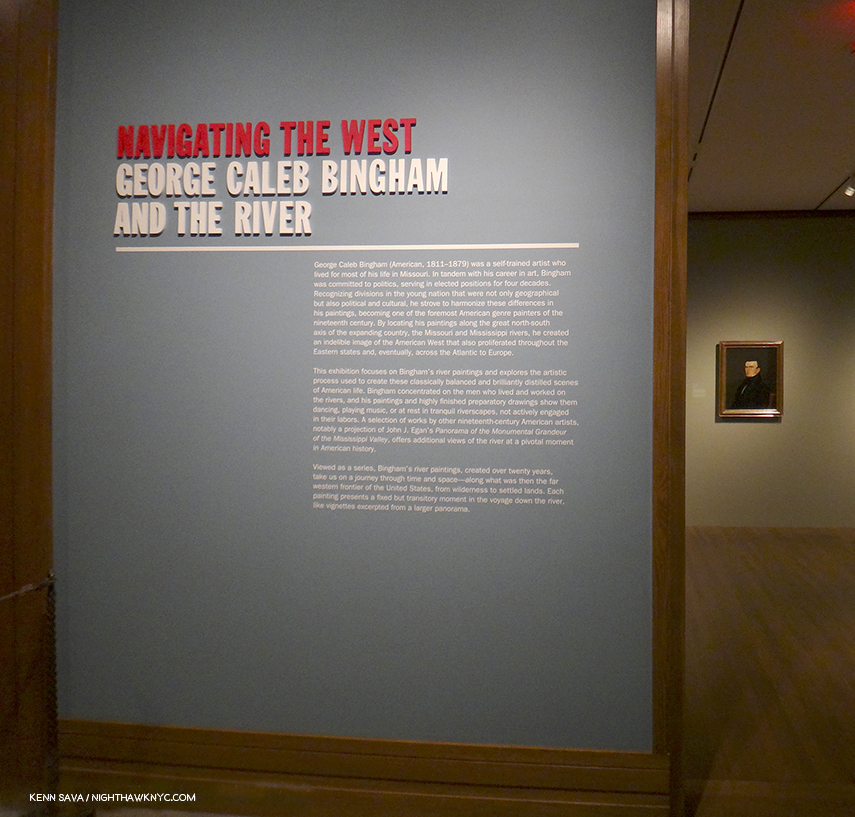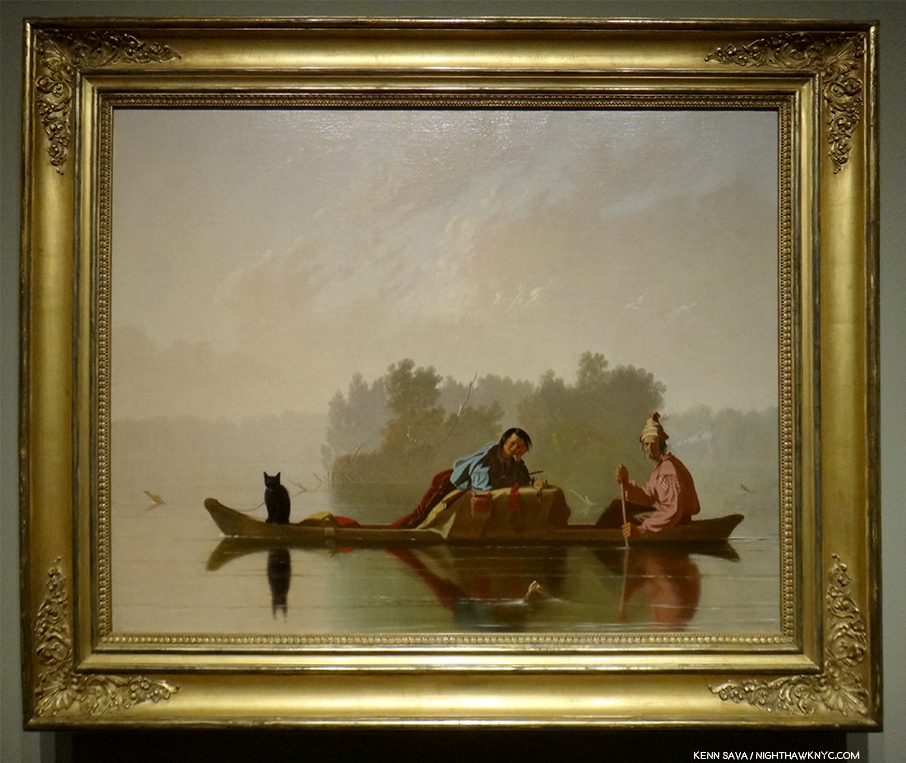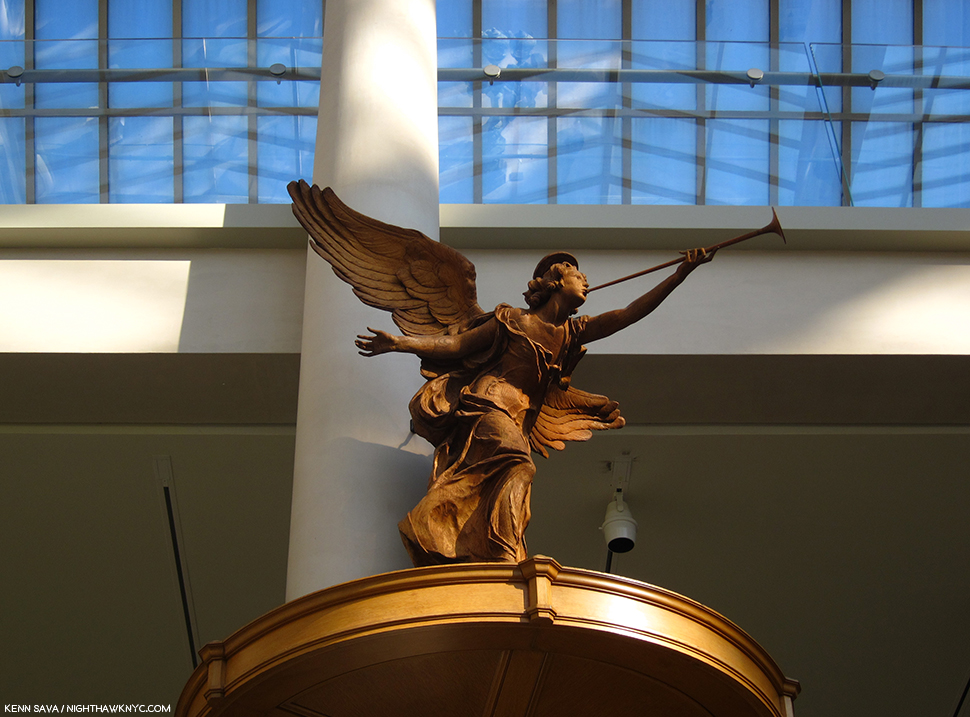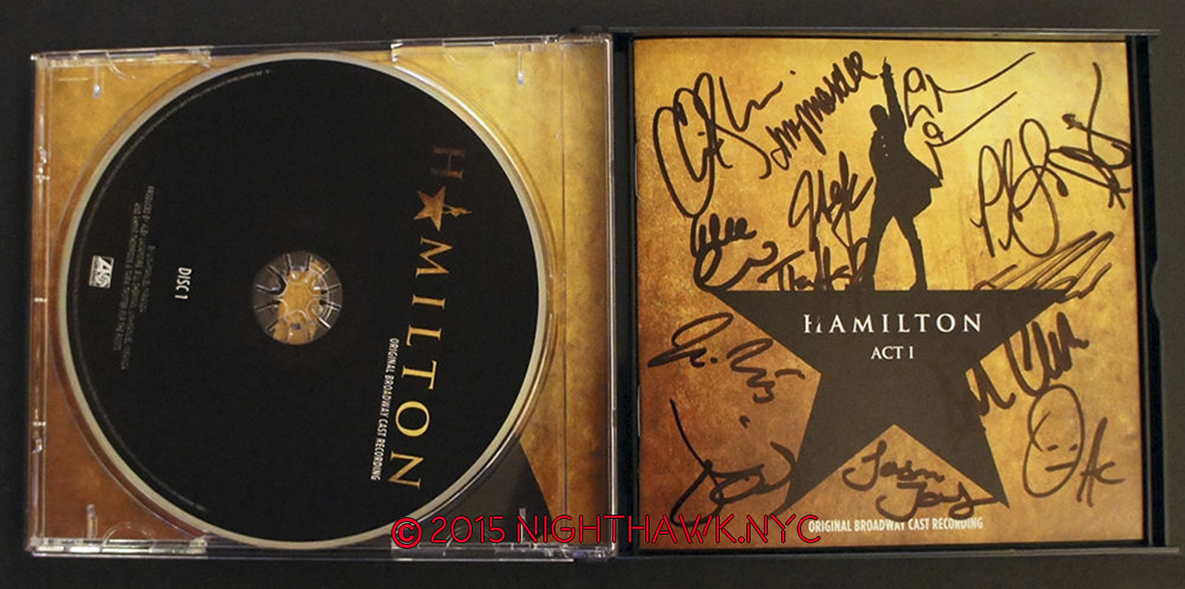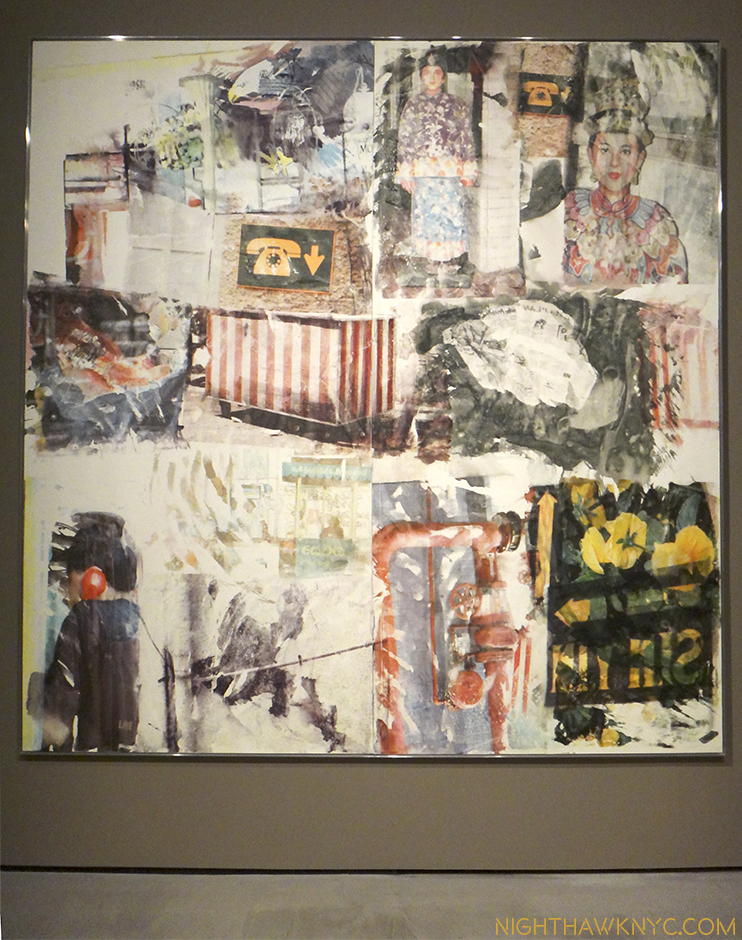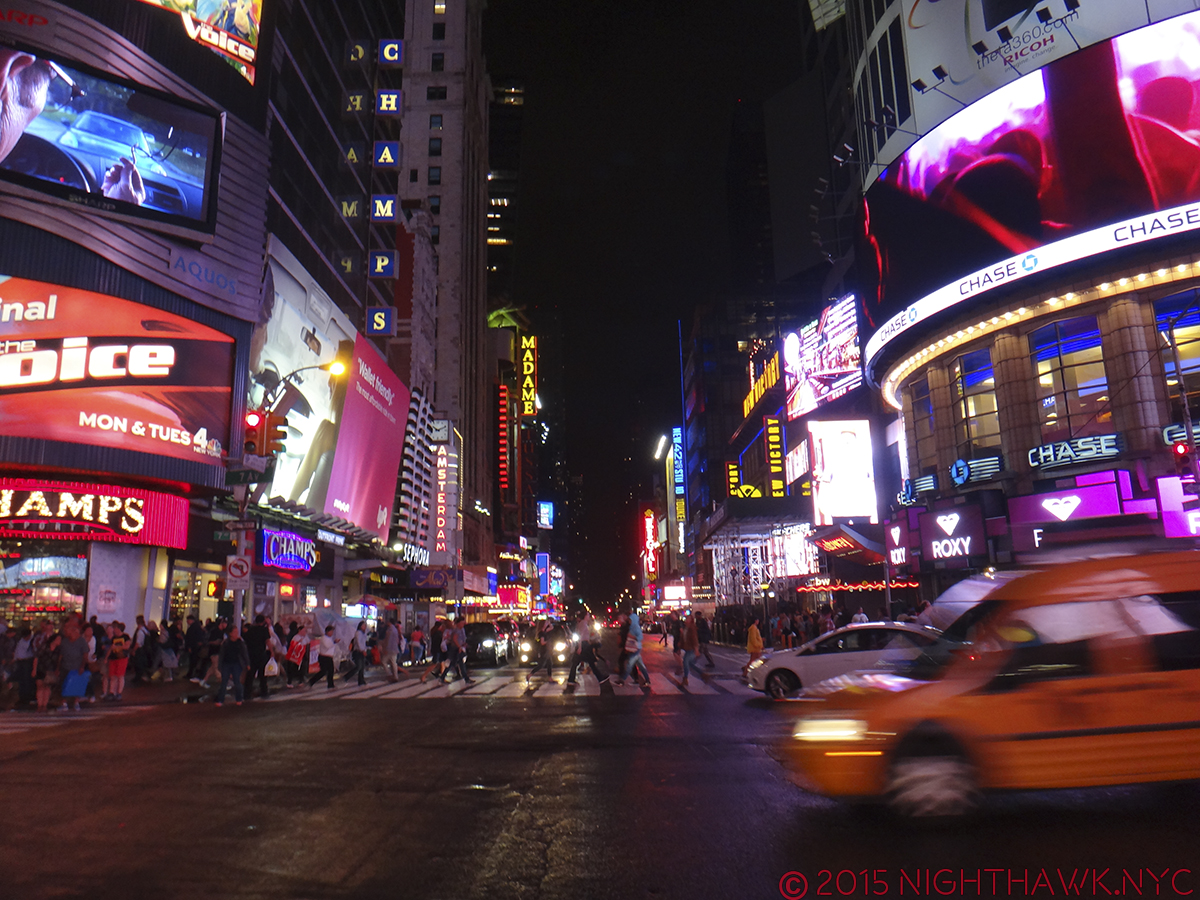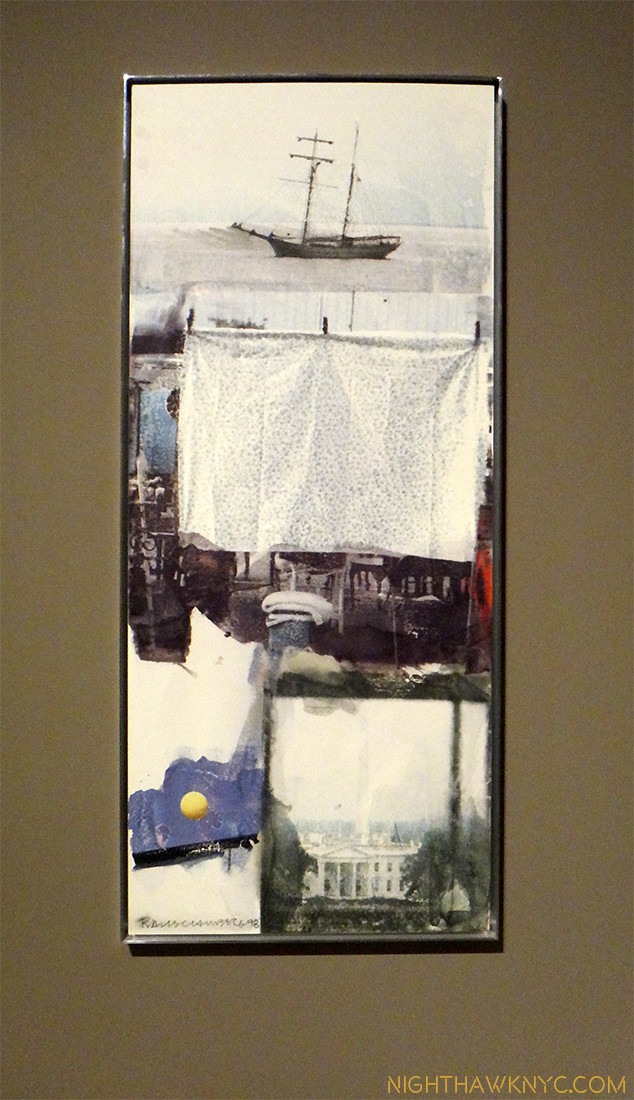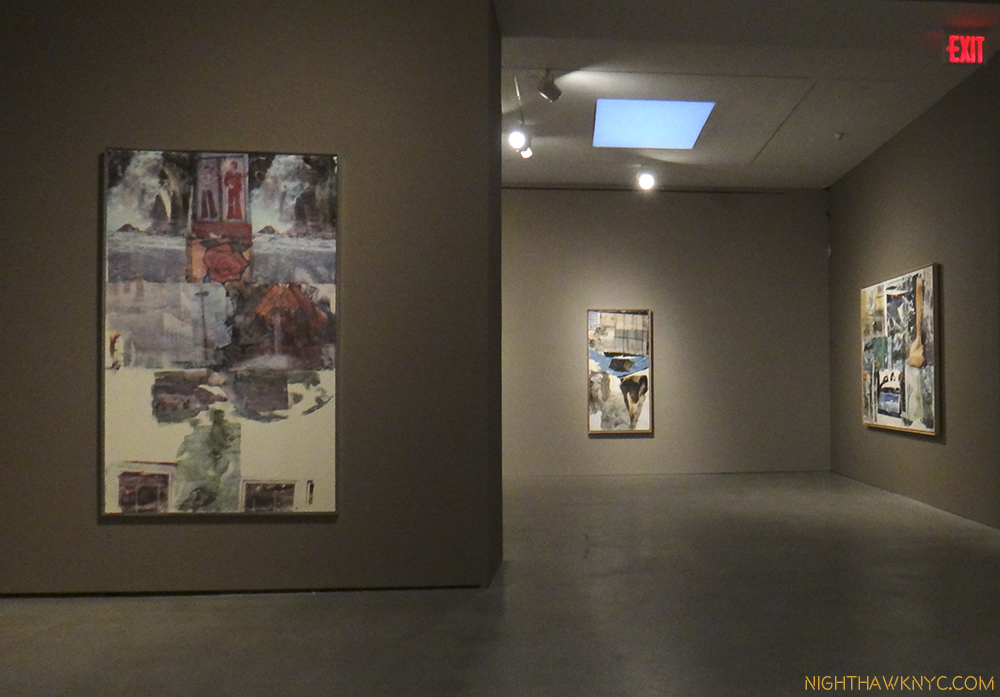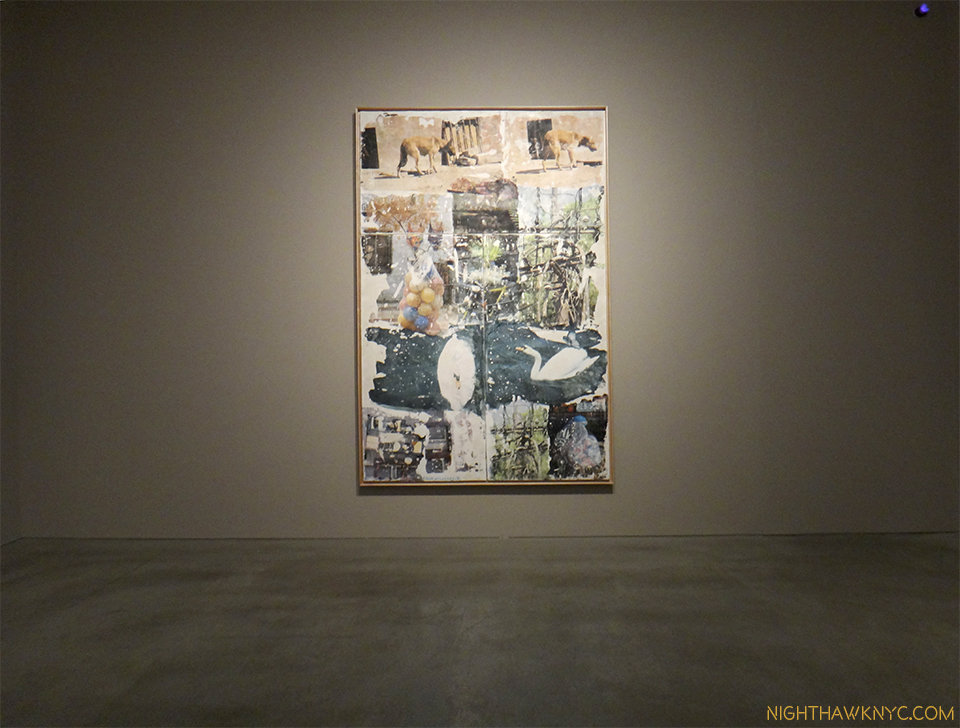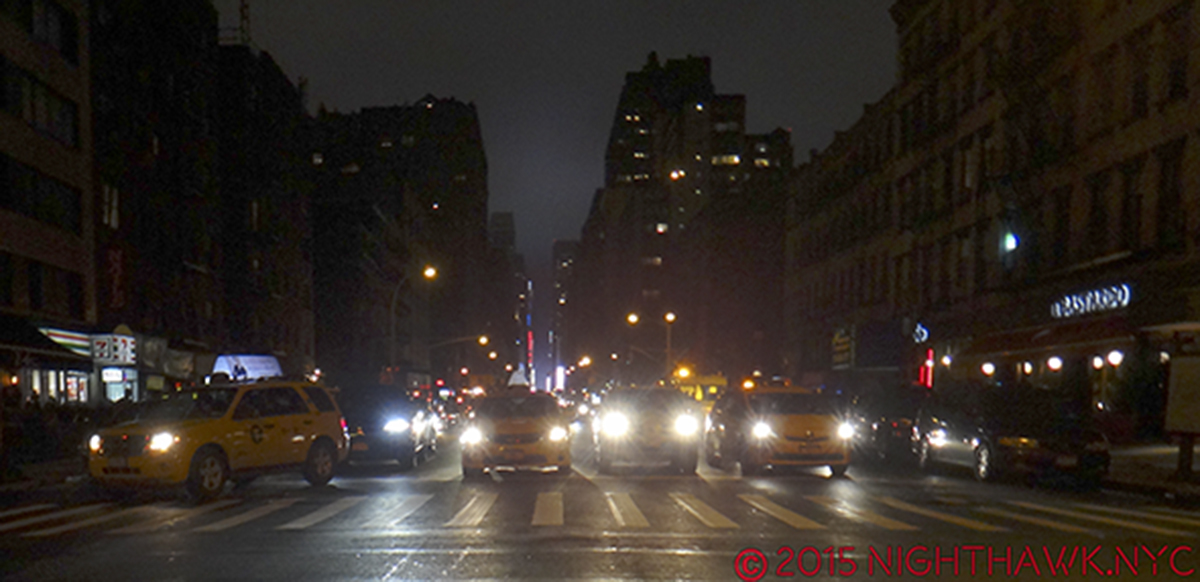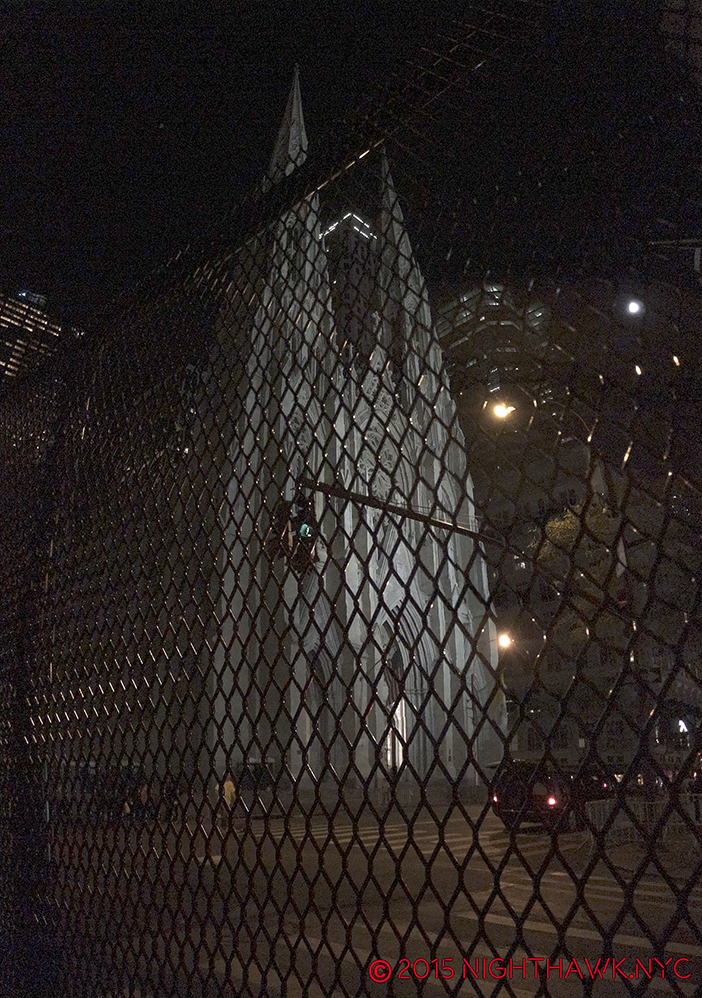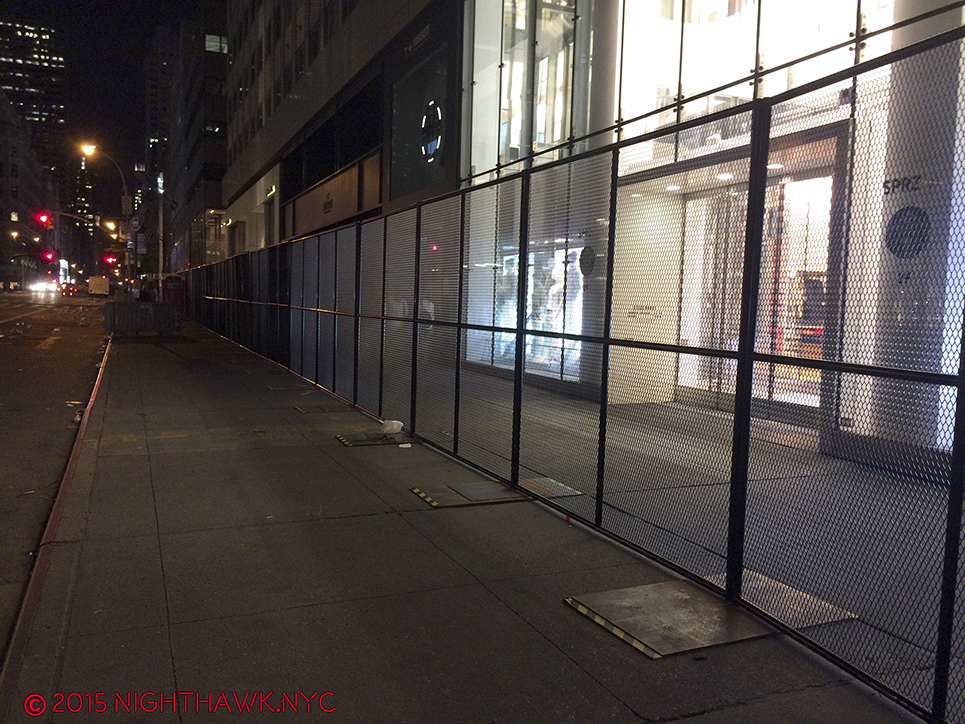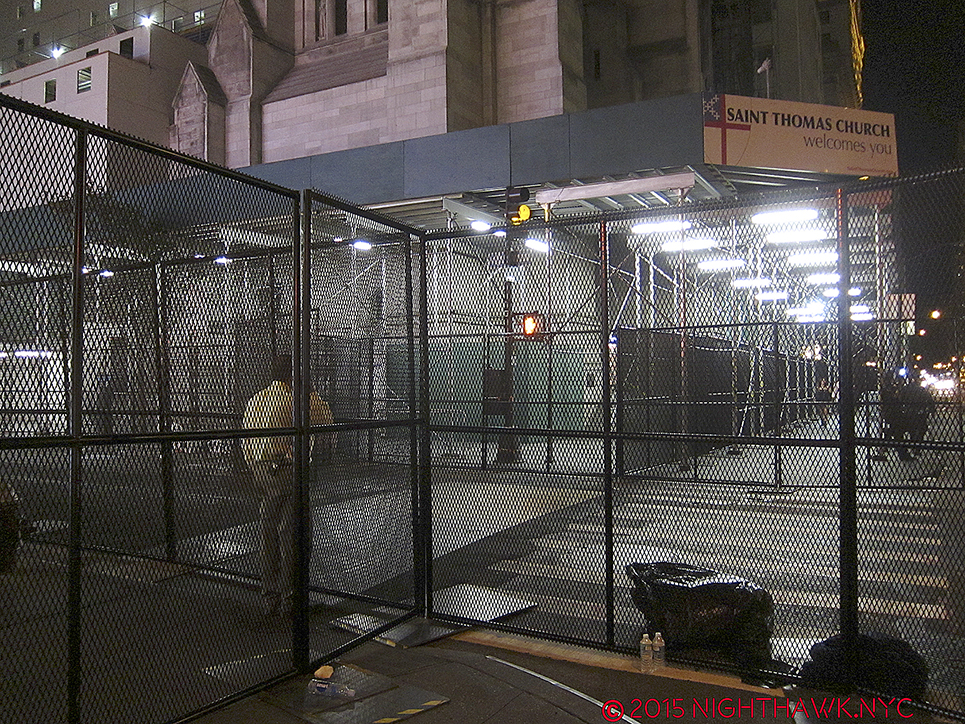Written & Photographed by Kenn Sava
One of the small pleasures of going to The Strand Bookstore are the quirky, usually ironically humorous yellow signs one of the staff places in random books. This one was sticking out of a just released book one day last October- Patti Smith’s “M Train,” featuring its author looking incognito sitting at a corner table by herself lost in thought…
Patti Smith, who many years ago briefly worked one floor down in The Strand’s basement, is a living legend now, but, she’s not stopping there.
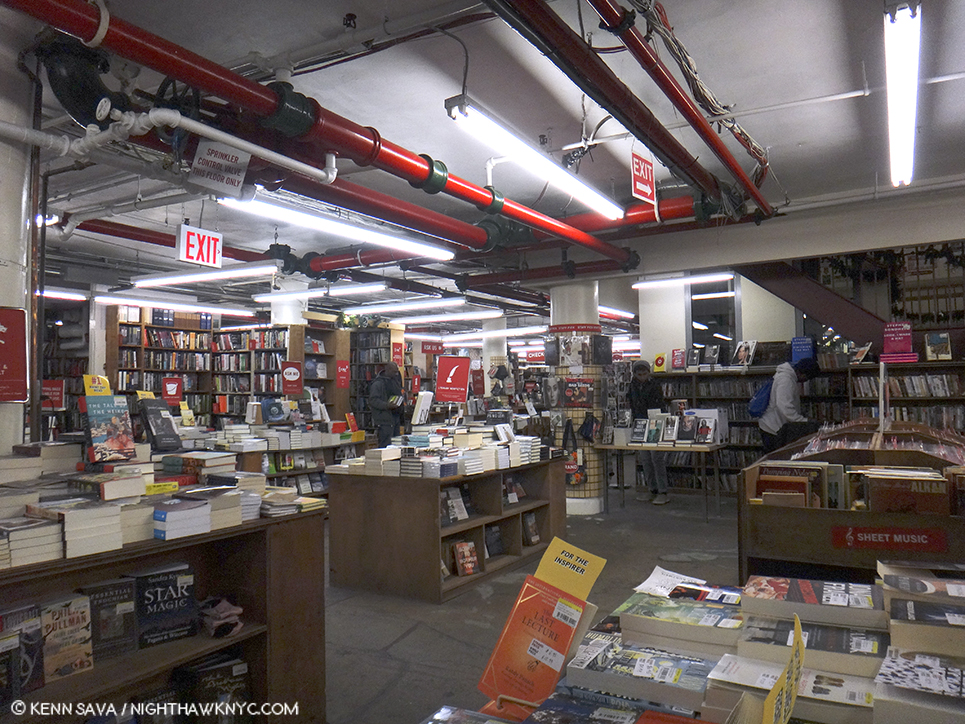
From here to… The Strand’s basement. Not one of the 18 Stations. The “Patti Smith section” is now down here.
Beyond her groundbreaking music career, she’s had a second career as an award winning writer of prose, which seems to grow in stature all the time. “M Train,” which she calls “a roadmap to my life,” is both similar, and different, to her previous book, the instant classic “Just Kids.” While also a memoir, like “Just Kids” was centered on her relationship with Robert Mapplethorpe, this time, it’s about her life before, during and after her late husband, Fred “Sonic” Smith, guitarist of the MC5. It differs, too, as her Polaroid photography is a central part of this book. While, she’s been doing photography for years, and books of them have been published, she seems liberated here by not having a brilliant photographer as the co-subject, one she felt a responsibility to, and who’s pictures of her are now classics. Her photos enhance the story and go hand in hand with her imaginative telling of it, which almost feels improvised (she mentions listening to John Coltrane’s 1964 album “Live at Birdland” at one point and that is how her writing here feels to me). The book serves to pique interest in this aspect of her creativity. Now, many of those photos, and others, are on view in her show, “18 Stations,” at Robert Miller Gallery on West 26th Street, through April 16.
While rock stardom is rare, something few can relate to, along the way, she’s also become something many more can relate to- single, and on her own. The show arranges images from her seemingly never-ending travels from, and returns to her NYC homes, and her beloved Cafe ‘Ino, at 21 Bedford Street in the Village, (spoiler alert), which closes for good near the end of the book. At the figurative and literal “heart” of the show, half way back in the Gallery, in the first “Station,” is an installation of her real table and chair from Cafe ‘Ino (“My portal to where.”) flanked by a bulletin board containing what appears to be the genesis of this show on one wall, and pencilled notes hand written right on the adjacent wall, making me wonder if the show originated during her time there.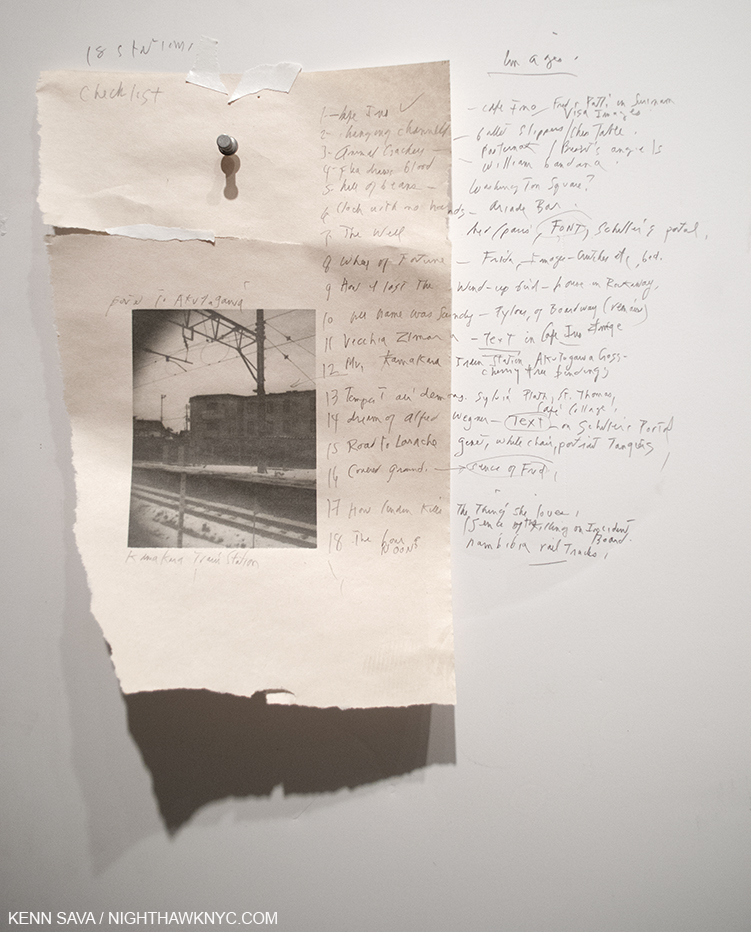
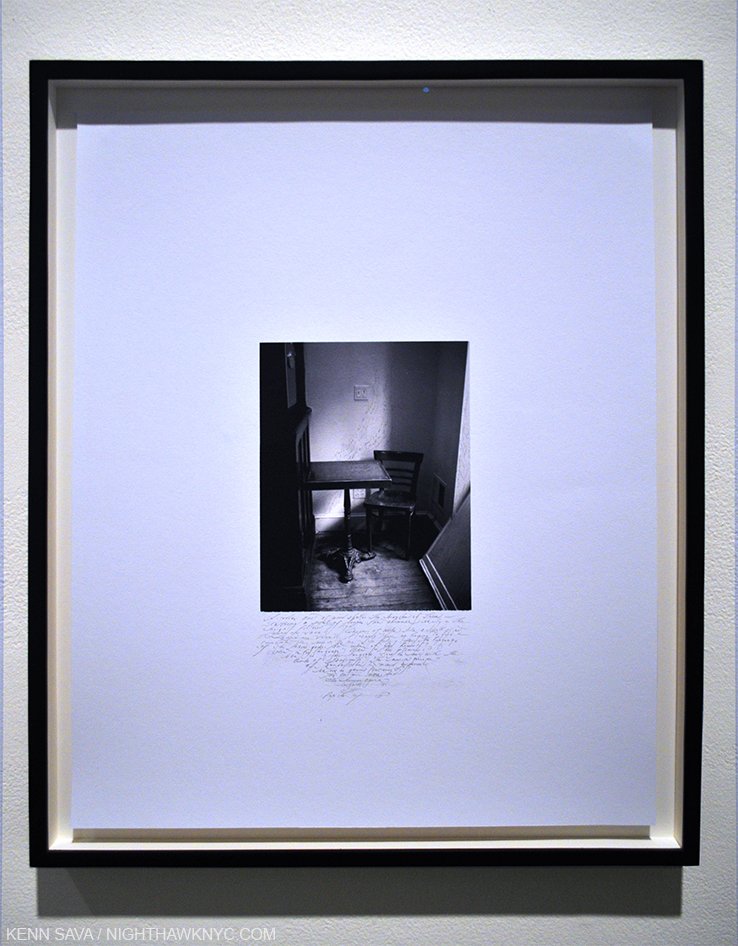
“It occurred to me I could preserve the history of ‘Ino…like an engraver etching the 23rd Psalm on the head of a pin.” The iconic first picture in M Train in a unique version with Patti’s pencil inscription in her caligraphic script.
It’s as if the thoughts she was having while sitting there are now real before us, though she is absent. The other 17 “Stations” tell the story of her journeys, partially with her late husband, “M Train” dedicatee, Fred “Sonic” Smith, but mostly alone.
Reading the book, one discovers quite a bit about the “real” Patti Smith- her unquenchable thirst for (good) coffee, her obsession with detective TV shows….which, of course, reminds me of a song. You know…”She’s filing her nails while they’re dragging the lake…”
…her amazing connectedness to her influences to the point of traveling to their homes, gravesites or other memorable places in their lives- like visiting the chess table Bobby Fischer played Boris Spassky for the World Championship in 1972 in Iceland (she then had a late night meeting with Mr. Fishcher, and subsequently visited his grave after he passed the following year). She remembers so many of her dreams! I don’t. She also has a love of birthdates and anniversaries. Along the way, we meet Tolstoy’s Bear, Herman Hesse’s typewriter, Frida Kahlo’s medicine bottles and Schiller’s portal. I mean oval table.
If you’re curious about how she works, or how she goes about her daily life, this is the book for you. For the rest of us, its a book about honing in on what really matters to you, about persevering and continuing to do you work and hone your craft. We’re lucky to have it. I found myself wishing we had something similar by Da Vinci, to go along with his Notebooks, or Michelangelo, who left us about 500 letters and possibly ghost wrote a biography of himself, that is frustrating for many reasons, where Patti’s paints a vivid picture. The amount of detail she recalls is staggering (and perhaps a bit too much). Well? I can’t have it both ways, so I’ll opt for too much rather than not enough. It’s interesting to contrast this intense detailing in the prose with her photographs. Some are a bit blurry, some off center or kilter (see below) providing (purposely) less detail than you may want.
“Speak to me, speak to me heart
I feel a needing to bridge the clouds, softly go
A way I wish to know, to know
A way I wish to know, to know”*
While most of these Polaroids are silver gelatin limited edition prints of 10, a few of these remarkable and beautiful images are graced with her equally beautiful handwritten inscriptions creating one of a kind works, they all, consciously, have an old feel to them, belying the fact that some were taken barely 3 years ago, which gives them a dream-like, seen in a vision quality, which Ms. Smith says she likes about early photography. The effect strikes me as not unlike that achieved by the great graphic artists, like Rembrandt, Goya and Whistler.
It’s also interesting to ponder what isn’t- here, or in M Train. There is no Robert Mapplethorpe. There are no shots of the Hotel Chelsea, West 23rd Street or Chelsea. No CBGB’s (How many of you remember that Patti Smith was also the last Artist to perform there?). There are only a few (as far as I can tell) of Manhattan. The two shots of Cafe Imo, of course, a shot of the West 4th St Subway Station, a shot of her house, among them. In that sense, for someone who, (for me and perhaps quite a few others) is associated so strongly with New York City, this is a show (like the book) that is largely about the world “outside” of it. ‘Ino being the “portal” to it. Memories of people and places outside of Manhattan (even in the case of Ginsberg and Burroughs who spent so much time here).
“Speak to me, speak to me shadow
I spin from the wheel, nothing at all
Save the need, the need to weave
A silk of souls, that whisper, whisper
A silk of souls, that whispers to me”*
Among my dozen visits was one on April Fool’s when a few hundred of us were blessed to have our paths cross with hers at a reading here that served to highlight for me, at least, the conversational nature of both her recent books, then hearing her tell stories about them, and her life, in ways no “audio guide” ever could. I’ve heard a lot of Artists, and Musicians for that matter, speak about their work. Rarely have I felt like they were speaking of their children the way these stories felt. The memories behind each shot is so personally present, it lies as close to her skin as the image lies on the surface of the paper. Quite a few of the stories are told in the books, and hearing her read them changed the way I will re-read them. (I have not heard the audio books she’s done of them.).
I didn’t expect to hear her read from Just Kids, expecting this to be about M Train, but she did. I don’t know Patti, and didn’t know Robert Mapplethorpe, but I know well know the area much of the book inhabits, as well as some of the venues it takes place in, so the book lives in me, as few I’ve read do. Hearing her read it brought it alive, pulling it from the realm of “living history,” to something that, yes…really did happen. I pass by some of those places a few times a week.
Every single time I do I think about what happened there.
This is one of the most personal shows I’ve seen, certainly recently. I found myself returning to it over and over, like she did to Cafe ‘Imo. It’s like being able to walk around in someone’s memories, rather to get on a train and stop at each Station along her journey. Along the way, we encounter influences, living, passed and once living among you and now passed, objects that speak to a large meaning or significance, memories, hardship, distant places went to, seen and conquered. We see life being lived and places where it famously was lived. We see that life goes on, all the time, around us- everywhere, while weather happens, dirt gathers on graves, dandelions grow and stuffed bears eternally await calling cards.
M Train sweeps the dirt that accumulates on the many graves it visits, without need for tenders in traditional wear and using a literary broom to do so- the kind those buried within would possibly prefer. It’s a Testament to Life- surviving on your own, through deaths, Holidays without others, long trips, your birthday, sudden illness, blackouts, meeting legends, unexpected connections that prove life changing, and most of all, change. In the end, you can’t even go home any more.
___
Postscript, April 16-
Each of the dozen times I went to this show, I especially looked forward to seeing her table and chair from Cafe ‘Ino, which I show in the 6th photo above, and below.
Walking over there today for the last time, I asked myself – Why? Why do they “mean” so much to me?
I was never even in Cafe ‘Ino. I had to look it up on Apple Maps to even see where it was. I’d never met Patti Smith. I didn’t follow her music career very closely. I wasn’t aware of the extent of her work in photography.
?
I don’t get it.
I read Just Kids and loved it for many reasons, including those I mention above. One of those was the sense of the Manhattan that is now gone- both people and places lost, it so beautifully captures. Patti stands for that lost Manhattan for me for that reason and also because her music was a vital part of it. When I started reading M Train, all I knew about it was that it was about writing alone in a cafe. I could relate. I spent 10 years drawing alone in bars. Inside the book, the very first picture is of her table & chair in situ at Cafe ‘Ino. We’ve all lost a lot in our lives- it’s an inevitable part of living. Patti is no different. Neither am I. Neither are you.
When I reached the Gallery today, I walked down the hall and rounded the corner to visit their installation. When I looked in, I was stopped in my tracks completely in shock. The table and chair were taken.
Patti Smith was sitting there, alone, signing books.
At that moment, it hit me. What they say to me is that they speak for what’s been lost in her life. They, in ways even her pictures aren’t, are physical representatives of what’s been lost. They are still here. They are continuing with their “lives.” Like we all must- like Patti is.
For me? I feel so very lucky…so blessed. Getting to see her sitting in her chair at her table…NOTHING could have been a more fitting culmination to her show. Though, this was close…
“Speak to me heart
All things renew
Hearts will mend
‘Round the bend
Paths that cross
Cross again
Paths that cross
Will cross again”*
It is the ultimate “P.S.” to it.
As if the universe was saying to me- “P.S.- Life goes on.”
Hopefully.
*Soundtrack for this Post is “Paths That Cross” by Patti Smith, from her ablum, Land (1975-2002), written by Patricia Smith and Fred “Sonic” Smith, published by Druse Music. All other quotes in the text are from M Train by Patti Smith and published by Alfred A. Knopf.
January, 2019- This Post is dedicated to all the Patti Smith fans from around the world who’ve written to me about it.
NighthawkNYC.com has been entirely self-funded & ad-free for over 8 years, during which over 300 full length pieces have been published!
If you’ve found it worthwhile, PLEASE donate to allow me to continue below.
Thank you, Kenn.
Written & photographed by Kenn Sava for nighthawknyc.com unless otherwise credited.
To send comments, thoughts, feedback or propositions click here.
Click the white box on the upper right for the archives or to search them.
Subscribe to be notified of new Posts below. Your information will be used for no other purpose.

